|
Section 1. What is the process of obtaining a serval, caracal, bobcat or lynx kitten from Stylisticat? First of all, we ask that you submit a kitten application and that gives us the basic information such as your current amount of animals and experience with animals. We will ask you to provide proof of address (such as a utility bill) and a current passport and driving licence which matches the proof of address given for two picture identification purposes. This totals 3 proofs of identity so we know you are who you say you are! We will then go through all the requirements of owning a wildcat and the kind of responsibilities it entails. You need to arm yourself with a wealth of knowledge and come up with several plans to implement in case of emergencies. You also need to think about your will and what would happen with your cat if you should die. You need to learn about the behaviour of your chosen wildcat and look into how you will increase your bond and chances of a successful relationship. We'll make sure you're really ready for a wildcat before placing one with you, for both of your sakes. Can I get two at once for breeding? We only allow experienced handlers to have two wildcats at the one time. Section 2. What about my DWA licence (in the UK only) or permits (USA, Canada and EU) to keep a serval? After we have verified who you are, we will help you obtain your DWA licence if you don’t already have one. If you do require a permit then we will require a copy of this before we will release the kitten to you. The reason for this is that we have to lodge proof of your licence to our local council/ state department for animal welfare. This a requirement of all kitten sales which are required to have a licence on our premises. You can read more about DWA Licences in the UK here: https://www.stylisticat.com/blog/dwa-licence-questions Where do I start? So you are wondering how we have come to own such beautiful cats and wondered where to start, whilst you give the idea of exotic cat or dangerous wild animal licensed cat ownership very careful consideration… We receive many questions on a daily basis on how to obtain these animals and if they are all as wonderfully tame as they are in our videos which we post regularly on social media. I decided to write this small article as a rough guide to cover these questions and explain reasons behind my answers. I will also discuss the breeding aspect of these animals very lightly. I will refer to the “DWA”, and the, “DWAA” throughout and these abbreviate the “Dangerous Wild Animal” and “Dangerous Wild Animal Act”. Any animal considered not to be domesticated falls into the DWA category in the United Kingdom. You will find that parts of the world have different rules and do not even licence some wild cats for private ownership. In some countries not only wild cat ownership, but hybrid ownership is banned altogether. I would suggest that before deciding to really research private exotic cat ownership, whether this be a hybrid or full wild cat, please do check your local laws depending on which state or country you are in. This is primarily aimed at the UK DWAA, but can be used as a guideline or part of your research on wild cat ownership anywhere in the world as I hope it can give you some useful information. The Dangerous Wild Animals Act was first produced in 1976 and amended in 2010. The purpose of the act was to prevent incompetent ownership of the larger species which were widely available around the time of the Act’s compilation. Do not get me wrong, there are still a number of private owners in the UK with leopards, pumas, cheetahs, tigers and other larger species but they are licensed and inspected annually/ bi-annually to ensure the welfare of the animal is being prioritised. There are no different rules in Scotland, Northern Ireland, Wales or England on the DWAA. What is the requirements of a DWA Licence and how do I find out more? 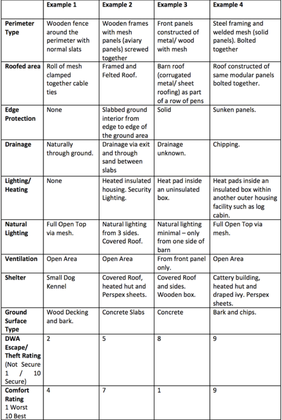 Firstly, there are no physical national requirements on enclosure sizes, materials, lighting, heating or design structure. The answer is simply- speak to your local council animal welfare officer. Each individual council or county has their own requirements on what they feel meets the DWAA compliance for them to issue you with a licence. I will give you an example of 4 different wild cat owners enclosure types and they all have DWA Licenses: NOTE: the comfort rating and security rating is a personal opinion and is not issued by a council. The rating is inserted to help potential DWA cats keepers to understand the difference that enclosures can make to the life of the animals in their care. Who enforces the DWAA? Your local council holds full responsibility to enforce the DWAA and issue or refuse to issue licences to Dangerous Wild Animal keepers. It is worth noting that you must apply for a DWA licence before you obtain your animal you intend to keep on your premises. Most councils have application forms for a DWA licence so by asking for one well in advance, you will have an insight into what information the council will require from you. It may also be worth speaking to your council DWA officer to gain the contact details of the Veterinary Surgeon who will be inspecting your enclosure. You can then contact her/ him directly and discuss any concerns or recommendations they may have well before you start your building project. It is worth remembering that there are a few requirements that must be met to adhere to the act and this is what the council is there to enforce under the act. What are the basic requirements of a DWA Licence? The council will check to ensure that:
Secure entry systems where the animal can be accessed i.e. key/ pin code, Lockable windows, Adequate sanitary provision, Animal carriers for emergency vacate, Emergency procedures, Fire Extinguishers, Appropriate meat storage (raw meat & chicks etc), It may be worth thinking thoroughly through your escape procedures very thoroughly as some councils may not grant a licence on the basis of poor enclosure structure or lack of knowledge. We have a gamekeeper in the local area who has been allocated an emergency position in case of escape and we are unable to capture. The purpose of this is to ensure that there is no threat to the public. It is then down to the individual licensee to ensure that they never have to make that call… If a licence will be issued, it will include the following:
If I plan to breed DWA’s – what happens when another one comes for breeding? Call your council well in advance to notify them and ensure they add the cat on to your licence. Councils have the right to discretion and as this is a temporary situation you will be able to add on the animal for a short period. Do I really need a licence? How would anyone know any different? Power to seize Firstly, we do not trade any animals under the DWA to non-DWA holders. Please do not ask us as we will not risk the safety of our animals. We have exceptionally high-standards in our facility and if you are not deemed competent by the local authority in your area, then we will not undermine this decision, or overrule and give you a cat anyway. “But I’m about to build an enclosure” “I’m just waiting on my inspection” “I’ll build the enclosure before the kitten gets big” “It’s only the one cat, so I don’t think I really need an enclosure” If you would like a kitten from us which requires a DWA licence then please provide us with a copy of your licence that has already been granted. NOTE: Where an animal is being kept contrary to the section 1 (1) of the DWAA (held without a licence when it requires a licence) or any condition of your DWA licence is contravened/ you are non-compliant, the council may seize your animal. The council can hold on to it, rehome it, destroy it or whatever they decide and they NOT liable to pay any compensation for the animal to the owner. Not only do they not need to compensate the owner but they can also charge fees for uplifting the animal and doing what they have decided to do with it. This debt is recoverable through court. I find it difficult to encounter the wild cats which I would like to own…why is everyone so protective? Without a zoo licence, it is not possible to allow visitors to come and visit our animals any more than a few days per year. This also goes for the USA – you need an exhibitors licence to be able to show your animals to other people. Also, you need to work for trust. Network. Visit places if people will allow you to. If breeders of the animal you want to keep are being secretive, ask yourself why. It can be difficult to source if wild cats are inbred or not without being in contact with other people who have bought cats from the person you decide to buy from. If you genuinely want to purchase a wild cat or F1 hybrid then ask breeders if you can spend some time with the breeds they have, stating your genuine interest in purchasing one. Some breeders may even accept volunteers, but be sure that they have adequate insurance to cover others in with their DWA animals. To explain this further, one of our insurance policies only covers those named on the licence, so we have had to take out a further policy to cover those who are not named. By having two, we can change the amount of liability and the type of contact with the animals. What cats are covered under the DWAA? A selection – (remember if it is not considered domestic, then a licence is applicable): Bobcat Caracal Cheetah Jaguar Lion Lynx Ocelot Puma Serval Tiger Section 3. Enclosure Building If I have an enclosure built and a DWA licence granted, can I bring the animal in the house? No. Not unless you have your house or more specifically an area of the house dedicated to DWA animals. This is not easily attainable but is achievable through time and knowledge. What’s the point is keeping a DWA animal outside in an enclosure all the time? I want a DWA pet. Firstly, they are not domestic pets. A dangerous wild animal licence covers you for animals that are not “pets”. The term pet is part of the reason why the act was introduced. The fact that these animals are not domesticated means that they are not well-suited to houses or the domestic lifestyle. It is often that these animals will not use a litter tray or play with something that was a much cherished possession of their owners. DWA cats are quicker, smarter, more agile and can give bigger bites than your average domestic cat – they need to be kept secure not only for public safety, but for their own. Their bites are not always in an aggressive manner and merely playing or love bites, but some people may not be able to tell the difference and get upset. The main reason that they are not suited to the indoors only without any outdoor provision is purely for the cats safety more than anything else. It has been known that they have jumped through a window when they've got a fright. If you decide to bring your cat in and it escapes, you will have to put your emergency procedures into place and you could lose your cat and your licence. If you really want your DWA cat in the house, plan carefully and have it onto your licence. We do NOT recommend that you get a wild cat as a pet for a domestic environment. Do I need to make any special housing arrangements for my Serval, Caracal, Bobcat or Lynx? African Serval, Caracal or other medium wildcat- or F1 Savannah enclosure: For an F1 or serval, you need an enclosure. We prefer full metal enclosures - contact us for a supplier. We have a special licence which covers an area of our home under the special breeder DWA Licence we hold, but this is not easily attained or recommended. It is not just about the construction of the enclosure that is important but also what is inside it that counts. You need to think about the natural environment and not just pop them into a wooden shed with a small outdoor area. They should be able to run and get out of breath, Play hide and seek, splash in the water, jump up high, sit on a perch, shelter from rain or sun, scratch their claws, do the toilet in a clean area every time and, of course, explore new objects. From time to time we will reconstruct the whole inside of the enclosures to ensure that they feel like they are somewhere exciting again. The minimum space we would keep F1's (up to 3 plus a male) or a serval (per serval) in is 50 square metres. An example of this is in the picture on the right. You want to make sure they have a place where if they feel like they want to be alone, they can be. They sometimes do not want company and like to go and sleep somewhere up high. This is the case for the indoor rooms within our cattery buildings too. Importantly, they need to be able to interested in every environment that they live in, especially when they are with other cats. This room pictured on the left, is in the process of being built. The windows are double sided, with Perspex on the inside, glass on the outside and then meshed over. Incidences have occurred where servals have jumped through windows so mesh is a security system for safety, even though it goes out into the enclosure. Making them feel part of the family even if they live outside is important. It’s always worth changing things up or moving things around to enrich their lives with new surroundings. If you do not provide adequate comfort and environmental security for them then you may end up with a worst case scenario – a fight between cats. Wildcats can fight each other to the death and therefore you do not want to leave things to chance. Make sure they have the opportunity to be where they feel safe and secure or can jump out the way of a grumpy enclosure-mate if need be. Welding an enclosure at night - working all hours! 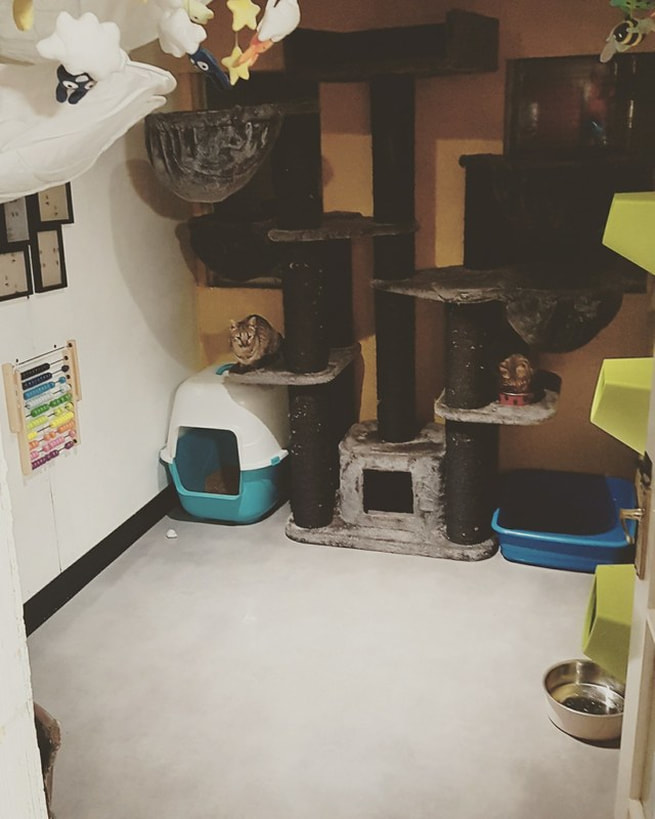 You can put a lot of things inside your housing. These include things such as: Steps Mobiles Hanging leaves Artificial Ivy Artificial Plants Towers Bead counter Picture Frames Blankets Cushions Several litter trays Water bowls to prevent algae growth on bowls outside CCTV Beds Cubby Holes Rope Bridges High Beams and walkways TV’s Heaters Heatpads Fireplaces Posters One of our CCTV cameras The 12 basics for a happy wildcat are:
If you can afford to build your enclosure fully in metal then we would recommend it simply because it’s easier to clean, much more longer lasting and require minimum maintenance. You can build one yourself or use a supplier. a. Design Try to include different zones such as water play, balls, rolling around, jumping, climbing. These areas need to be cleaned and also they need to be maintained so try not to make them too difficult to look after. Cats often find places to defecate that are inaccessible by humans so try not to construct something, which causes issues before the cats are even in it. A planted are is also desirable – even with artificial plants. b. Enrichment You can use rope swings, plants, balls, ball pits, swimming pools, sand pits, bark, hanging baskets, water features, boxes, artificial ivy and logs to create beautiful zones which are interesting to your cat. Try to avoid using concrete slabs over the whole area because it isn’t soft on your cat’s paws and therefore they can wear their pads away walking on concrete all day. Try and think like a cat, make it interesting, put food inside cardboard boxes, have high shelves, hang logs to walk along – important part – have fun doing it! c. Suppliers Contact us for local suppliers in the UK. What size should the enclosure be? This really does depend on your availability of space. Remember they need to be able to run about, so think of this when planning your design. They don't stay tiny kittens forever! Section 4. Feeding and Routine What do they eat? Initially they are raised on a special milk called Zoologic Milk Matrix 33/40. You will need to purchase a bag of this either from us or from the USA directly. This milk is an imported product. We sell the bags from £55.00. In the UK, we recommend a complete mix for your servals food. We supply your servals food for the first few days but you must ensure you have enough stock at any given time to last for two weeks. You will need a separate freezer to be able to store your kittens food as it cannot be stored alongside human food. You will also need an area which you can thaw your kittens food to room temperature. NEVER thaw raw meat in a microwave. In emergencies, if you have forgotten to thaw the meat the night before, then you can thaw it in cold running water in the sink. There are a variety of meats which we can supply you with Kiezebrink raw meat in frozen overnight shipping. The ones we recommend come in 500g or 1kg per unit and this is our prices: 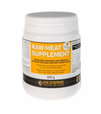 Be very careful with whole prey and raw meat – always cleanse and disinfect the area where they have eaten the meat and collect any uneaten parts. Dispose of immediately in an outside sealed bin. Do not store in the home. A whole prey is not an effective diet on it’s own unless the full body including the organs have been ingested. Section 5. Supplements What about supplements – what do I use? Raw meat supplement plus calcium £9.60 (£8.00 ex.Tax) Suitable to supplement a raw meat diet without bones, for both dogs and cats. Contains all required vitamins and minerals for dogs and cats, according to European guidelines. Daily easy to use dosages, by using the included measuring spoon. Why this supplement? This supplement contains a high level of calcium and is therefore suitable to supplement a raw meat diet without bones. It contains other minerals and vitamins, not just calcium, which dogs and cats need. This supplement is an ideal addition to: A self-composed raw meat diet that contains muscle meat and possibly organ meat, but no meaty bones. A diet in which variation is not possible because of allergies for example. A diet that for any reason there are doubts about the completeness. We also have a raw meat supplement without calcium. 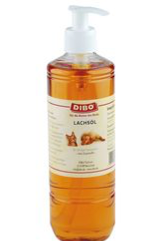 Salmon Oil - £7.99 100ml Dibo Salmon Oil is a great supplementary food for cats and dogs. It is rich in essential, polyunsaturated omega 3 and omega 6 fatty acids. Omega 3 fatty acids play an important role in the body's physiological processes and support the development and functionality of various organs. It is especially important for healthy joints, heart and circulation as well as helping to improve the immune system, skin and fur. Salmon oil can also be beneficial if your pet is suffering from skin issues, heart problems and infections and it can also help wounds to heal as well helping to relieve any symptoms if your cat or dog suffers from allergies.A normal diet does not always provide enough omega 3 & 6 fatty acids. Especially pets on a BARF diet can benefit from Dibo Salmon Oil. The oil is gently cold pressed to help retain the valuable fatty acids. It is 100% natural, made without artificial additives. Dibo Salmon Oil comes in a handy pump action bottle for easy dosage. Dibo Salmon Oil at a glance: Supplementary food for cats and dogs Suitable for pets on a BARF diet or which eat raw meat 100% natural Very rich in unsaturated omega 3 and omega 6 fatty acids Supports the functionality of various organs Helps to relieve symptoms of allergies or illness Helps to improve the condition of fur and skin Gently cold pressed to retain the valuable fatty acids No additives Easy dosage, practical pump action bottle Ingredients 100% salmon oil Feeding recommendation Daily amount per animal: 3ml for every 15kg body weight (3ml = 1.5 pumps) Days we feed it: Monday Thursday 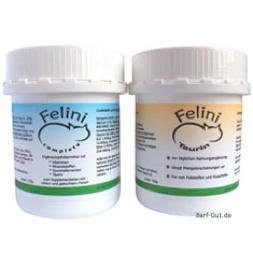 FELINI COMPLETE - £14.99 125g/ £21.99 250g Cats are true carnivores (pure meat-eaters) and have very specific dietary requirements. Their natural diet consists of all sorts of prey like birds, insects, mice and other small mammals, which provide them with protein, fat, amino acids, vitamins, minerals and trace elements. A food containing raw or cooked meat is the closest thing to this natural diet in the wild. Not all the nutrients cats need to live are kept in meat from butchers and supermarkets. Feeding raw meat therefore requires supplementation of vital minerals and vitamins to prevent dietary deficiencies; Felini Complete is a balanced dietary supplement and turns pure meat into a all-round balanced meal. Felini Complete is free from vitamin K3 and contains no allergens making this meal perfectly designed for pets with allergies. Felini Complete: Balanced complete addition to meat feeding With vitamins, minerals, trace elements and taurine Free of fillers and anti-caking agents Hypoallergenic - suitable for allergy suffering pets Comes with measuring spoon Additives per kg: Nutritional additives: Vitamin A (800,000 IU/kg), vitamin D3 (20,000 IU/kg), vitamin E [a-tocopherol acetate] (5500 mg/kg), vitamin B1 (320 mg/kg), vitamin B2 (160 mg/kg), vitamin B6 (240 mg/kg), vitamin B12 (1650 µg/kg), pantothenic acid (720 mg/kg), biotin (10,000 µg/kg), nicotinamide (1300 mg/kg), folic acid (52 mg/kg), iron [sulphate] (2400 mg/kg), copper [sulphate] (160 mg/kg), manganese [sulphate] (224 mg/kg), zinc [sulphate] (900 mg/kg), iodine [Ca-iodate] (42 mg/kg), taurine (100,000 mg/kg). This is classified as a food supplement due to its higher content of vitamins A, D3 and trace elements than complete foods. Only feed this as 5% of the daily feeding portions. Felini Complete is designed for the exclusive use in pure meat preparations and must not be mixed in as a supplement with complete foods (e.g. canned cat food). Analytical constituents protein 6.89 % fat 0.59 % ash 84.66 % calcium 19.3 % phosphorus 3.0 % magnesium 0.8 % sodium 11.0 % Application & Dosage: A supplementary cat feed. A fully grown cat weighing 4.5kg requires approx. 130g of meat spread out over 2-3 meals. Mix 65g of meat in with 0.8g of Felini Complete (flat spoon) and 2 tbsp of water. For the preparation of larger amounts give 12.5g of Felini Complete with 1kg of meat. As well as muscle meat, heart (up to 15%), stomach and kidneys (up to 5%) can be fed to your cat. As Felini Complete contains calcium, phosphorous and vitamin A, you should not feed your cat bones or liver. Do not feed any raw pork. Felini Complete contains sufficient taurine. It supplements pure meat to achieve a balanced meal. No other supplements are necessary. Days we feed it: Monday Wednesday Friday Sunday or use Kiezebrink raw supplement dependant on bone content of feed. 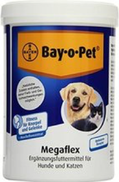 Bayopet Megaflex £8.99 For the formation of connective tissue and musculoskeletal system, your cat requires special nutrients. During growth, times of high physical activity, and as your cat ages,he/she require more of these nutrients than is normally found in traditional cat food. Megaflex provides your animal with these nutrients and revives normal tissue regeneration. Specially formulated with biologically enriched, cartilage-protecting substances that supply important nutrients necessary for the development and repair of cartilage. Megaflex ingredients Green New Zealand mussel: Glycosaminglycans (GAG), Chondroitin-4-Sulphate and Chondroitin-6-Sulfate, also further cartilage-protecting, all natural ingredients. Willow bark: contains natural substances that support the autochthonous regulation in cases of inflammation and pain. Rampion: Has supportive, decongestant and soothing qualities. Humans use it to avoid joint degradation. Nettle leafs: counteract cartilage-decomposition and joint degradation with silica and other ingredients. Vegetable oils: supports the autochtone reparation processes of the connective tissue. The vegetable oils contained are rich with non-saturated Omega-3 and Omega-6-fatty acids. Vitamin E: helps your cat absorb free radicals useful for treating deficiencies of the connective tissue, muscles, and joints. Ingredients Meat & meat by-products, fish & fish by-products, dried mussel, vegetable by-products, yeast, vegetable oil, trace elements. Additives: vitamin E (100,000 mg/kg). Analytical constituents protein 25.7 % fat 5.7 % fibre 1.6 % ash 7.4 % Cat's weight feeding amount in g / day up to 5 kg1 measuring cup (2 g) over 5 kg2 measuring cups (4 g) Days we feed it Tuesday Saturday Grau Bone Meal - £7.50 Grau Bone Meal is the ideal calcium supplement for your cat because it contains natural minerals and trace elements and has really high bioavailability so that your cat can effectively reabsorb it. The nutrients contained in bone meal are vital for developing a strong skeleton and powerful jaw, and are particularly important for growth. Grau Bone Meal is suitable for cats and dogs. Grau Bone Meal can be used to supplement raw feeding (BARF) to correct an imbalanced calcium-phosphorous balance. Grau bone meal is also suitable for cats that don't tolerate bones well. Grau Bone Meal:
Caution: Due to the high calcium content, cats only require less than half a pinch of ground bone per day! Do not exceed this dosage and do not give WITH other meaty bones or calcium supplement or supplement containing calcium. Note: Grau Bone Meal is exposed to high temperatures and enormous pressure during the cooking process. Heat and pressure kills all the germs so that cats and dogs are not infected with pathogens such as BSE and other diseases. Ingredients: 100% ground bone (beef). Additives: No additives, according to the manufacturer. Analytical constituents protein 0.2 % fat 0.3 % fibre 0.3 % ash 81.4 % calcium 35.7 % phosphorus 25.6 % magnesium 0.022 % sodium 0.016 % Feeding recommendation: Cats: 1.5g every 2-4 days (depending on the calcium content of meat used and whole prey provided). A 0.5g measuring spoon is included in the packaging. Caution: Due to the high calcium content and bioavailablity of this product, please do not exceed the dosage stated above if giving to your cat. 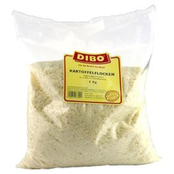 Potato Flakes - £4.99/kg If your cat is fed exclusively meat or if you are feeding a BARF (Biologically Appropriate Raw Food) diet, your cat risks suffering from deficiencies in certain nutrients. Dibo Potato Flakes can help to prevent these deficiencies from occurring. Simply add these natural flakes to your cat's normal food to provide extra minerals and fibre. Potatoes are a rich source of magnesium and calcium, which can both help to boost your cat’s health and promote essential metabolic processes. The flakes are particularly easy to digest and grain free, which makes this suitable for cats with allergies. The gentle drum drying process prevents essential nutrients from being lost during processing. This product is has a high nutritional value: Approximately 1g of flakes gives all of the nutritional value of around 5g of fresh potatoes. Dibo Potato Flakes at a glance:
Potato flakes (99%), calcium carbonate (1%). Additives: According to the manufacturer, this food contains no additives. Analytical constituents protein 9.0 % fat 0.5 % fibre 3.0 % ash 5.0 % calcium 1.0 % 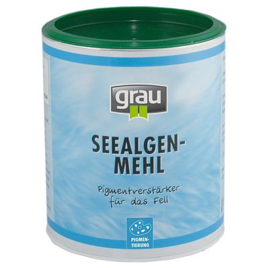 Grau Seaweed Meal - £6.99 400g This natural product is exclusively comprised of fresh seaweed. The many natural minerals, vitamins and amino acids in this product boost pigmentation and bring out the natural colour of the skin and coat. This is particularly noticeable with dark fur. It supports metabolism and the immune system and has a direct effect on vitality, looks and performance. Natural seaweed meal contains a high amount of iodine, which is essential for a healthy functioning thyroid. Nutritional supplement Supports any natural pigmentation from white to black Contains 380,g/kg of natural iodine Promotes a thick and shiny coat Please note: Seaweed meal should not be used with Hyperthyroidism. Ingredients Dried, fresh seaweed (Asyophyllum nodosum) Additives: No additives, according to the manufacturer. Analytical constituents Protein 6.8 % fat 3.2 % fibre 8.2 % ash 24.8 % moisture 8.9 % Luposan Herbal Power 30 - £14.99 600g Feeding with Luposan Herbal Power 30 provides the basis for a healthy metabolism. Herbal Power 30 is a unique herbal food supplement containing micro-algae and many other natural components, including: minerals, amino acids, trace elements, vitamins and non-saturated fatty acids. Herbal Power 30 makes any food, however good, easier to digest and metabolise. Administered daily, Herbal Power contributes to: Improved nutrient absorption Shiny coat Healthy skin Optimal metabolism Digestive tract regulation and cleaning; toxin disposal Regular natural bowel function Improved natural immune response Luposan Herbal Power 30 contains approx. 50% herbs including; nettles, horsetail, burdock, pansies, and rose hips, approx. 30% sea algaes and micro-algaes including chlorella algae, and approx. 20% seeds (milk thistle, flax seed). Ingredients: Herb mixture (apprx. 50%, incl. stinging nettle leaves, horsetail, burdock root, pansy, rose hips, milk thistle, grape seed extract, etc.), algae (apprx. 30%, sea and microalgae), seeds (apprx. 20%, incl. milk thistle, linseed). Analytical constituents Protein 13.9 % Fat 10.8 % Fibre 19.2 % Ash 29.4 % Calcium 12.0 % phosphorus 0.4 % moisture 5.3 % sodium 0.03 % How often do I feed them? And do they eat kibble or biscuits? A serval kitten needs 4 feeds per day until about 6 months old and then they can reduce down to 2 – 3 feeds per day of meat. You can do 2 bottle feeds per day until 9 months old too. Once 9 months old, a bottle feed can just be part of a bonding process and every 2 or 3 days to once per week. You must be careful when adding supplement to the diet if giving bottles because it contains everything they need in their diet and should not be over-supplemented. I have been asked by a few people recently for help with feeding their serval and caracal kittens. I thought I would compose this guide to make things easier for you instead of you having to recalculate daily and getting all flustered! Firstly, congratulations on your new baby and hello to those who are here as part of their research on owning one of these beautiful animals. I would also like to recommend this guide to those who have asked how much milk to feed a Savannah kitten or how much to feed a newborn wildcat kitten. I will also include some recommendations on what you can purchase to support the feeding routine of your serval kitten/ cub, caracal kitten/ cub, bobcat kitten/ cub or lynx kitten/ cub in the UK. This includes teats, bottles and methods which we use to feed our kittens. Generally, we recommend that as soon as we have established a good feeding routine with a serval or caracal kitten, that it comes to you to start the bonding process. Waiting even past 6 weeks can really impact of the bonding process which you will have and the trust that can be built from a crucial stage in their emotional and sensory development. HOWEVER please note: ENGLAND The Animal Welfare (Licensing of Activities Involving Animals) (England) Regulations 2018 5.—(1) The purchase, or sale, by or on behalf of the licence holder of any of the following is prohibited-- (a)unweaned mammals; (b)mammals weaned at an age at which they should not have been weaned; (c)non-mammals that are incapable of feeding themselves; (d)puppies, cats, ferrets or rabbits, aged under 8 weeks. (4) No female animal with unweaned offspring may be removed from its home environment and newborn, unweaned or dependent offspring must not be removed from their mothers. It is illegal in England to take a kitten from its mother to hand-rear. We are lucky to have social mothers who allow us to socialise kittens in tandem to the mother raising them. I always recommend that your serval or caracal kitten vaccination is not normally carried out until at least 16 weeks of age due to the slower rate of growth. This is why the feeding requirements are crucial because you become Mum or Dad; you become the only source of life for these kittens and it's crucial you get it right. Many of you who follow serval and caracal groups on social media will have read recently of a number of servals who have been suffering from a calcium deficiency where, in layman's terms, the bones fracture in the legs and the kittens become unable to support the weight of their bodies on their legs. Many of them have died. There has been a number of deaths of serval and caracal kittens which have been delivered with broken legs over the past few years, not only in the USA but in Europe and this rate appears to be increasing as people buy servals, often related, then breed them to make a quick buck. None of these breeders appear to know or more importantly care what they are doing. These servals are arriving with CITES papers with Savannah written on them and we have been contacted by people who are living in fear that their cats are illegal and fear of them being seized and destroyed. Two breeders which we urge to err on the side of caution (or basically just set your money on fire) with are in Russia and Ukraine. You do not want to go through the heartache that several people have been through with these breeders. Even more recently, servals are being sold from the UK without any paperwork at all and sent abroad in the hope that they won’t get caught or seized. This becomes more about the money than the animals. BE CAREFUL. As you know, I am very keen on supplementation and diet research for all of our cats. Some breeders heavily stress by feeding a mixed whole prey diet, that your serval or caracal kitten would be perfectly healthy and this is true to an extent. Often cats in captivity do not eat the whole prey which they would in the wild because they know that their next meal is coming by sunset. Feeding your serval or caracal kitten on chicken drumsticks and mixed minced meat is NOT sufficient for their diet. They need much more than raw meat and some bones. We always recommend you buy Keizebrink Organ Mix to add to your meat and we ALWAYS use carefully measured supplements which are like multivitamins for cats - the main ones are here. It is important that once your serval kitten is weaned that you still add some milk to their meat for the first 6 - 9 months of their life as kittens. Many will still feed them bottles to keep that bond - and that is perfectly okay also. If you do not want to feed a bottle to a serval or caracal then this is not the right kitten for you. This is a major part of the 'breakthrough-barrier' in getting them used to living in captivity alongside you. So here are some details that should hopefully get you started.
How to start weaning if you are raising an orphan You would ideally feed from a teaspoon (silver spoon) and wedge just under the front teeth at about 4 weeks old. Your kitten will show resistance to this, but once they get a taste, they will likely start to nibble it off the spoon. You may find whatever you get into their mouth they just push back out again with their tongue. This is a normal part of weaning and don’t lose hope. Keep trying twice a day and continue with bottle feeds as normal. Once they take it easily off the spoon you can lure them to lean down to the bowl with the spoon. You might find they only eat the bits you scoop onto the spoon but keep encouraging them to follow the spoon to the bowl and they will soon be eating from the bowl without your help. You should only need weaning paste for about a week at the most and then you can move onto more chewy, thicker textures. Be very careful about giving him chicken drumsticks as they don’t really have that much goodness in them due to the fact that the cats need organs in their diet to be complete. The chicken meat and bone is good but they will be too little to chew the bone. The better alternative is day old chicks. They are GREAT fun. Very tasty, high in nutrients and fun to throw about for an hour before eating. The bones are soft in day old chicks and so easy to eat. AT NO POINT SHOULD YOU GIVE YOUR SERVAL BISCUITS/ KIBBLE. IT IS NOT A NATURAL FOOD FOR THEM. Junior Diet You can feed your kitten up to 6 - 10% of their body weight in solid food per day for good growth. 10% - 20% in kitten milk per day for infants. Once your wildcat has got to 4 months they should be ready to eat quail and larger whole prey. You can give this to them gradually by cutting them in half with a butcher’s knife and serving in parts. Be careful not to leave uneaten food lying around for too long as the bacteria grows at room temperature and you do not want a sick baby wildcat. By the time they have got to 4 months of age you really do not need to give them any bottles but can continue to do so for bonding purposes. ALWAYS sterilise bottles until 4 months old. Adult Diet You can really mix it up to make it interesting for your serval or caracal cat. You can tie food on string to the roof of their enclsoures so they have to find a way up to it, you can hide it inside cardboard boxes or up a tree! They enjoy 1 quail and 5 day old chicks in the morning 0800 hours, then they have around 500grams/ 1.1lbs of meat at night for dinner at 2000 hours. You really want to stick to around 3 – 5% of their bodyweight in meat per day depending on their metabolism. A pregnant serval, caracal, bobcat or lynx should be allowed at least 2 – 3 times the amount they would normally eat on a daily basis. They will need it for the growth and feeding of the kittens after birth. We always continue to feed our servals this amount for 3 months after the birth of their kittens even though the kittens are hand-reared by us from 3 weeks of age for socialisation purposes. This helps to bring mum back to perfect condition. A “working” serval male will also require a good diet to keep his energy levels high. Servals, caracals, bobcats and lynx do become lazy if overfed, so try and keep them in a nice lean condition. This is copyright and watermarked. You may contact us for a copy of this table for personal use. 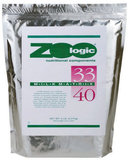 Which milk do I feed my wildcat kitten/ cub? You can buy the milk required for healthy Serval, Caracal, Bobcat, Lynx and Savannah Kittens. Zoo Logic Milk Matrix 33/40 from £58.95 - £99.50 BUY HERE A milk replacer and nutritional supplement fortified with vitamins and minerals to be used in feeding wild and exotic non-domestic animals such as Squirrels, Rabbits, Opossum, Wolves, Lions, Tigers, Pumas, Servals, Caracals, Binturongs and all Rodents. Part of an integrated system designed to let you virtually match any mammal’s milk. Mixing Directions: Reconstituting milk replacers with water is most accurately accomplished by weighing the individual components. If weighing is not possible, use the following volume measurements to reconstitute Milk Matrix 33/40 powder to the indicated concentrations: A volume is a measurement such as a teaspoon, tablespoon, cup, etc. Suggested powder:water mixing ratios for various species: 1:1 Rabbit. Most Rodents 1:1.5 Squirrel, Opossum 1:2 Serval, Caracal, Lion, Tiger, Puma, Wolf 1:3 Binturong Milk Matrix 33/40 Weights determined by scooping powder from the container and leveling. These values are only guidelines and can vary 5-10% due to variation in production. Milk Replacer: Milk Matrix 33/40 may be used alone or blended with other products in the Matrix family to formulate a milk replacer with nutrient levels that closely match a species’ natural milk. As a general rule, liquid or reconstituted milk replacer should be fed at a rate of 10% to 20% of the bodyweight daily or as tolerated and required for steady growth and proper stool condition. Divide the total daily amount into 6 to 12 feedings per day, depending on age, condition, species and staffing. Reconstituted milk replacers should be refrigerated and used within 24 hours. Feed at room or body temperature depending on size and condition of animal. Weaning Food Supplement: Because of its highly digestible milk nutrients, the formula used during suckling is an excellent supplement during weaning as a transition from milk to solid food. Add to the diet at the rate of one teaspoon of powder per 10 lbs. of bodyweight. Calorie Content (calculated) The calorie content (ME) is 740 kcal/kg or 11.1kcal/tbs when powder is reconstituted 1:2. Unblended product: Refrigerate after opening. Discard if unused after three months. Blended powder: Refrigerate for up to three months. Note: To extend storage life of opened or blended powder, freeze in sealed container; discard after six months. Unopened product may be frozen to extend shelf life for six months beyond expiration date. Guaranteed Analysis Crude Protein, min. 33.0% Crude Fat, min. 40.0% Crude Fiber 0.0% Moisture, max. 5.0% Ingredients Vegetable oil (preserved with BHA, BHT, propyl gallate and citric acid), dried skimmed milk, casein, egg yolk, L-arginine, DL-methionine, calcium carbonate precipitated, potassium phosphate monobasic, lecithin, dried corn syrup, calcium hydroxide, salt, monocalcium phosphate, sodium hydroxide, choline chloride, potassium chloride, silicon dioxide, magnesium carbonate, taurine, magnesium sulfate, vitamin A supplement, zinc sulfate, vitamin E supplement, ferrous sulfate, niacin supplement, copper sulfate, calcium pantothenate, vitamin B12 supplement, manganese sulfate, vitamin D3 supplement, folic acid, riboflavin, thiamine mononitrate, calcium iodate, pyridoxine hydrochloride. 6. Behaviour
What if I get a wild cat and I am scared of it? It is natural to be unsure about any animal which you haven’t met before. If you have bought a DWA cat then you must have it transported in a DEFRA-approved vehicle which means it’s suitable for transporting a DWA animal. It is worth getting your own transport approved for this. The travel tends to either completely upset an animal or they breeze through it not even noticing the travel. Give them a quiet room when they come home, but don’t leave them alone. Work with your animal right from the beginning. If your cat has been raised properly then it should be well-socialised and outgoing. Some cats can be shy and will take a few days to come round – but not longer. If they are still shy by day 3 then you will need to contact your breeder for advice. If you have not owned a hybrid of these animals, it would be worth doing so before taking on a wild cat. In all honesty, an F2 will only give you a slight indication of the temperament of the wild animal in their ancestry. By F2 there is likely to be around 25% wild genetics (2nd generation) from the wild cat, which is, in wild cat terms, huge dilution. The best thing you can do before making the decision is to get experience. Hopefully you will have taken a long time to consider the DWA cat you have purchased and worked so hard for your licence for. DWA ownership is not for those who are out at work all day as they need regular interaction come rain or shine. If you have a DWA cat and decide that it really isn’t for you after trying your best then it is always likely that the breeder will take the cat back (no refund) and you should always ask them in the first instance should you decide to part with the animal. We are currently going through a long process of setting up a non-profit charity in the UK to help with rescue/ rehoming of DWA cats only as more of them come into ownership in the UK and many often sold to un-licensed or unsuitable homes. Should you decide not to speak with the breeder for personal reasons then please contact us for advice. Are most wild cats like yours in the videos? Can I feed them from my hands? Aren’t they aggressive? I wish I could say they were. Every cat has their own individual temperament but you need to allow enough time when every cat you receive is new to have them imprint on you. Here at Stylisticat, I am the main carer. I am here almost 24/7 and spend an extensive amount of time with the cats to ensure that they know who is the most trusted person they can rely on. It has been often asked how I have molded them to be so loving when other struggle to get them to come when called or to pet their DWA cats. Some are flabbergasted that I have a serval cuddling on my knee, cleaning my face. It has not come easily and I have had to work so hard for the trust and love that I am given. I always say to people that you reap what you sow. My cats are all affectionate on their terms. The larger wild cats we have here will hiss at visitors who approach the enclosure. Once they get to know them a bit better they will rub themselves along the fence to try and scent the person and show affection. Always be persistent with animals, similar to small children. Do not reward naughty behaviour but do not ignore it either. When wild cats are small they play with their mouths. You may have to wear gloves initially until the training period is over and you and your cat have a behavioural understanding where possible. Some cats do not ever become ‘safe’ to work with, particularly the adults that are rehomed. Bear that in mind. Even my most loving cats can bite or scratch when they want/ do not want something and it’s certainly not just your average nip of the skin. You may get puncture wounds in your skin through play. This can be difficult to get used to initially and is not enjoyable but always have a toy to hand so that you can divert attention and show praise for playing with toys and not human skin. I would never advise playing with any DWA cat of a larger size such as lions or tigers. There is a great difference for example in the way that I play with Servals than the way I play with caracals! A lot goes on behind the scenes in any DWA Licensed keeper where there are a number of cats – great and not-so-great things. It’s only natural. If you have any questions feel free to ask. Do I have to hand rear the serval? We will always make sure the servals are still feeding from bottles even though they eat meat by the time they leave. When we deliver your serval kitten to you, you will be shown how to feed your serval with a bottle and also how much meat to feed per serving. You will be required to obtain a few items before we deliver your serval OR you can select the option to have a full delivery package with all the you are required to have for your kitten. The hand rearing for us is essential to your bonding process and we recommend everyone in your household does this whom the cat requires to have a bond with. When they are naughty, how do I correct their behaviour? You must sound a loud noise if they bite or nip you as a kitten. They must learn that this is not an acceptable interaction with a human. In order to encourage positive behaviour, you can always have a toy in your hand if playing – NEVER play with hands only, this encourages play but the wrong kind and when you touch the cat for a non-play purposes, they may bite you thinking that you are playing. This is not the kind of behaviour you want to encourage. Never smack your wildcat. The larger the cat the more likely it is that you should have safety methods for emergencies in place. These can include fire extinguishers and very powerful hoses. If you have a difficult adult cat, you can use these as a method of protection in the instance that you have a difficult cat that is not backing down. Sometimes wildcats need an effective time-out session and that is when they get so super excited that they become completely hyper and over-stimulated. They need to be put into a small room to calm down until they are ready to come out and behave again. This is effective at calming an over-stimulated cat down. Many people will crate train kittens so that they can be safe while the owners are away from home. This is a good method of protection for the kittens and great for safety/ licence purposes. What do you mean train them with your voice? They need to learn when they are being rewarded or if they are doing something undesirable. You need to ensure that you adjust the tone of your voice accordingly and show affection with your hands when you are rewarding them. You can give them a chick in reward and if they are showing undesirable behaviour, you need to raise your voice or make a loud noise to warn them as other species do in the wild. Bonding for life Your baby needs to know you are the number one thing in their life. This is why it’s important to help them realise this bond from day one. It will come, but the older the cat, the earlier the generation, the harder they are to ‘break’. All our cats are completely socialized so we don’t have any concerns in terms of willingness to play or come and greet you, however if you have a wild cat, the bonding process is more difficult and you will need to work hard with them alongside being very patient. Your visitors need to know how to respect and care for the animals and also if you are on holiday, you might want to get someone to come to your home, rather than them going to the cattery to reduce the stress on them. Patience, playtime and basic care are the start of the bonding process. Talk to your cat and A LOT. Let them recognize your voice and feel the comfort from it. They will learn to love you. Do they mix well with other cats or pets? Servals mix well with other animals but the other wildcats need a lot more supervision. This is purely down to the robustness of the other wild cats. Servals are powerful in their strike but they are quite fragile in comparison to a caracal and would be unlikely to win in a battle with a caracal. Caracals are extremely dominant whether that comes to food, blankets or even water bowls! They often ingest blankets to prevent other cats from being able to lie on them. They are extremely loving cats in any case, and adore a cuddle but can be quick to change and may bite if they feel you are overpowering them. You need to spend a lot of time with the cats to make sure you realise what different behaviour they are displaying means. You need to speak to them and train them with your voice. Don’t just let them loose and expect everything to be great. It can be! But it doesn’t always work out like that. You need to remember that any animal is an intruder in an already formed household. The pack needs to restructure and build again. This takes time. Be very encouraging and calm. If they hiss and spit, alongside puffing up just speak calmly and let them know it’s okay. Never give them into trouble or shout as it only heightens the anxiety and makes a bad atmosphere within the situation. It is normal for a caracal to attack smaller cats such as domestics. They see them as prey and hunt them in the wild. It's their natural instinct. I would never recommend leaving a caracal alone with a smaller cat. You want to ensure you have a really close bond with your serval, caracal, bobcat or lynx. This is why you introduce all methods such as quarantine for the first two weeks, harnesses for safety, bottle feeding and behavior training. The bottle feeding and bonding process should be very well underway before you introduce your wildcat to another friend. Once you feel very connected and have exchanged blankets back and forth between your current cats and new cat for the second week, you are ready to allow them to meet. Introduction to dogs and other pets Always ensure that your cat has somewhere high to get away from the other pets. If you find that the dog is very aggressive through a controlled introduction such as through a glass door or through a baby gate, then make sure they are on the lead so you can be in control of the situation. Never panic if they start to fight. Try to diffuse the situation quickly and calmly. You will be surprised how quick they will get used to each other. It does take time and patience. 7. Harness Training It’s important to harness train a serval or caracal if you are in the UK because if you have a fire emergency and no access to transport boxes readily, then you can evacuate quickly and securely with a harness. Also, if you have to go to the vets then the cat can be examined but controlled at the same time through a harness. They are used to harnesses by the time they leave us. They need to have it removed at night time for sleeping or when they are not being supervised to prevent chocking or injury. When you take your wildcat to his new enclosure for the first time, it is advisable to have a lead and a harness on the cat to prevent them from getting a fright then shooting away and hurting themselves on the sides of the enclosure. I would always try to make them feel that when they have their harness on, it’s an enjoyable experience. The harnesses which we provide and manufacture are made from cotton and have Velcro along with a double clip to prevent escape. Harnesses are available from £20 up to any amount you wish with the option of real diamonds to be affixed onto the hand-crafted collar. 8. Buying a wildcat There are loads for sale overseas – how do I import one? Any animal imported may be covered by CITES Licences you can contact CITES here. Any animal which is covered under a DWA licence i.e. a full wild animal or F1 hybrid cannot travel under the Pet Passport Scheme into the UK. You will be required to obtain an Import Licence from APHA/ DEFRA - Go to DEFRA. You will be required to quarantine the animal for 4 months in England and 3 months in Scotland within a DEFRA-approved quarantine facility. The facility will have a quarantine licence and must also obtain a DWA to accept your animal. PLEASE NOTE: We do have a DEFRA Quarantine Licence and so can help with your quarantine process. Contact us to discuss. Buying a cat from overseas cannot be released to you until it is at least 6 months old in the UK. This is beyond the bonding window and you may find that you cannot even get near the cat for the rest of it’s life. Buying from the UK means doing a lot of research. Unfortunately, it’s not a big market and therefore feedback can be few and far between. Finding a reputable breeder is very tough. There are only a handful of successful private wildcat breeders in the UK. Be sure to visit and check for anything that looks like a kitten farm. Ask to see all enclosures and check if they are clean and tidy. Check if the acts look healthy and happy. If something doesn’t feel right then walk away. A breeder should be on hand for advice if you should ever need it and be sure to ask loads of questions about lineage and where the parents came from. Always make sure you look on their Facebook pages and websites for their last litters from the parents. If they are breeding the Queen every 3 months then they are over-breeding and they are not interested in the cat’s wellbeing, only the profit. There are known breeders churning out wildcats in the UK and this only develops ill kittens and depressed mothers since their kittens are repeatedly removed for hand-rearing. Kittens from kitty mills are often cheap and easily available but cost more or die in the long run. 9. Bringing your Wildcat or Hybrid Home and Importation The most exciting part after you have chosen your baby wildcat or hybrid kitten is the part where you bring them home. We recommend using IATA approved carrier boxes because they are very robust and most importantly secure. You can use a soft carrier if you are travelling on a plane however we recommend you use one with the least mesh to ensure that you can keep an eye on the meshed window during the flight to prevent escape. The beauty of soft carriers is that they can be squeezed or moved slightly to allow for different seats in the aircraft. Many airlines will not allow you to put the animal anywhere apart from securely under the seat during the duration of the flight. Some may allow you to sit the box on your knee during the flight to comfort your kitten. More on this in the flying section below. We recommend Vet Bedding as it is highly absorbent and is easy to wash. IT also dries very quickly. Keep an eye on the water supply during travel because if it spills on the vet bed then it will absorb it and it won’t be available for your cat to lap up through the journey, which other beds may allow for. If you can, get a big enough box that you can put in a litter tray and a bed, along with two bowls on the door. You can buy special bowls that have clips on the rear for carriers. This way you can provide wet or dry and some water. I would always recommend wet food for the flight because dry food will dehydrate the cat if they don’t feel like drinking. Do not put the bowls too close together because if the water spills slightly then it will go onto the food next to it. Space them as far apart as possible. You can use natural medication such as Zylkene to calm your kitten for the flight, rail, air or boat journey. ALWAYS start one week before the trip to allow it to work. Always leave the cat carrier around from at least 2 weeks before if possible so that it smells like them and they feel comfortable with going inside it. You can then use the blanket for the travel for comfort. Plan well in advance with any agencies involved in the travel of your kitten. For UK travel, there are no travel requirements from us. Your kitten will be vaccinated twice, wormed three times and treated with advocate for fleas and any other potential parasites such as ear mites or fleas. Bringing in to the UK can be a lot more complicated due to our strict requirements. Any Wild Cat or F1 generation hybrid will require 3 months quarantine in Scotland and 4 months in England at a Dangerous Wild Animal licensed facility. Any F2 – F5 will require CITES which is a system of import and export permits to control the movement of the species. For travelling abroad, your kitten will be delivered by us personally so you can trust we are experienced with the multiple agencies involved such as APHA, DEFRA, USDA, CFIA and other CITES departments. For those overseas, we apply for a CITES permit [export] and after we receive this within 30 days, you need to apply for an import permit with the Fish and Wildlife Department in your country. Please beware of that the USA can take up to 4 months to process an Import and Export. The whole CITES process can take up to 6 months for UK to USA – occasionally 9 months. You have to be dedicated to the kitten of your choice and also be prepared to put in extra time to bond with it when it finally arrives. We request if you have a CITES kitten from us that you take at least 2 weeks off work to ensure they have your full attention when they arrive. We want our kittens to live happy, safe and fulfilled lifes so we have to look ahead to their arrival in their new homes before they have arrived. This is important even more so for wild cats. It’s a good point here to remind you that a wild cat may never bond with a human they have just met after being 6 months old. The other qualifiers are usually a rabies vaccination at 12 weeks old, then at least 21 days wait before travel, a passport issued by a qualified vet, recorded parasite treatment, a rabies blood test may be required for some countries, a skin test to check for ringworm may be required and occasionally countries may place additional requirements on proof of lineage. If you are buying from us then we know all about which requirements are in force for your country and can work quickly and efficiently to get these documents in place. Be very careful about importing or exporting a kitten without the correct documents, this can result in confiscation of the animal, death of the animal, a monetary fine and worst of all it puts the animal at risk. So, after all that work, your animal is home... You are required to take your kitten to your own Veterinary Surgeon within 48 hours of leaving our premises. The purpose of this visit is to ensure you and your vet are satisfied that the kitten is in perfect health; the kitten is fit for purpose i.e. breeding and there are no visible genetic faults. Your new baby kitten will take a few days to come round and feel back to their usual self. They have been used to litter mates jumping on them, playing at all hours of the night and best of all – Mummy! Now with no friends, no mum and being taken to a strange place you new baby will be feeling a bit scared and sorry for itself. Try to put them in a room on their own such as a utility room. Ensure you remove all chemicals and close toilet lids if you decide to place them in their for two weeks. Coax them out, if hiding, with their new feather stick (they all love these) and ball tube toys are also great. We recommend you buy a scratch post, as this is what they are used to playing on and will bring some home familiarities. Your kitten may exhibit stress signs through a funny tummy, sneezing, runny nose, watery eyes and/ or constipation with all the stress of coming to their new home and could have diarrhea for the first week. This should settle down by the first week. As we’ve said above – your cat has been fully tested for everything so if there are any runny bottoms then it will be down to the move or if you have changed their diet. Please ensure you have fresh water available at all times for your new kitten and change twice daily. Once you get your kitten home try and give them some time alone. A couple of days of the various visits to their room will help your kitten realize that everything it okay and there is nothing to be scared of. Once the kitten is settled with you and demonstrates a happiness to see you with purrs, puffy tail and back, along with possibly chatting to you, they are ready to explore the rest of the house. DO keep an eye on them on stairs as they are still babies. Try not to move the litter tray and DO introduce a few more if you have a large house. This may result in confusion and accidents. Your kitten is used to: Wood Litter Pellets. Always introduce other pets to your kitten gradually and ALWAYS supervise. It is natural for your kitten to puff up and growl or spit to show they are defending themselves and your pet may do this also. Try not to intervene heavily and keep a calm, encourage voice telling them it is okay. It CAN take a few MONTHS for your kitten to be fully accepted in a house with pets already there. Animals do have a hierarchy system and is a natural process for them to let each other know where they belong in that system! Try to be confident and calm as animals do feed off our actions and energy. Try and baby-proof your home. They will knock of your favourite ornaments by accident when whizzing around playing, may disappear behind the fridge, squeeze out a window, fall down the toilet (and possibly drown!), and eat a plant or flowers, which may be poisonous to cats. Also select good toys, which do not have chokable items, which could come loose. Please note – we can supply you with cat food, litter, bedding and toys at discounted prices so do get in touch if you require anything. Most breeders call it Savannah or wildcat-Proofing. You have to lock your medicine cupboard, razors in a sharp box and in a lot of cases you are better to have a fridge latch too. One of our F2’s managed to open our freezer door and steal some “Fish Fingers” out of the second drawer, inside a cardboard box. You can’t really be angry at their intelligence, they knew that’s where the food was. They watched us getting food from there and cooking it. They have often opened the oven door to check for any leftovers so it’s important to always be one step ahead of your Savannah cat. Don’t leave anything, anywhere that could be dangerous. You MUST find their intelligence fascinating otherwise it may not be the cat for you. Birth to 4 weeks old Kittens can wean from 4 weeks old but we like them to stay with their mothers until at least 6 weeks old when they are fully weaned. Our new cattery buildings have hospital grade flooring in each room, which means each cat has a full-sized single bedroom to have privacy and give birth in – and I can sleep on the floor beside them. The cattery has music on through out the day and then they get a DVD on a bedtime in the evening. This helps to acclimatize them to all the usual sounds. The daytime is so busy vacuuming and cleaning that they are used to all household noises before they have even progressed to the kitten room. We watch each of the rooms on CCTV, which is linked, to our mobile phones and a large 50” CCTV screen central in our kitchen with all cameras featured on it so they are supervised at all times. Their enclosures also have CCTV, which means there is no place unseen in our cattery. It means then that they are not moved out of their home into a different zone to have their babies. There are 4 of us that work on the cattery and enclosures to maintain an excellent level of hygiene and an excellent level of interaction with all our animals. 5 weeks old till leaving day Once the babies are weaned, we bring them into the kitten room and they enjoy their integration into family life. Your baby will be used to typical things in our house such as Disney Junior, Xbox Car racing and Just Dance, along with a mixture of Country, Dance, Drum and Bass, Dubstep, Pop and Rock/ Metal Music. They will be used to playing with toy cars, craft and anything else a 7-year-old would take into the kitten room with him! We also watch some movies with the surround sound on, which can be funny to watch them adapting to. They are placed beside dinosaurs as part of an attack on an army of dragon warriors or given an important role in choosing colour of paint for a picture although sometimes our Son does disagree with their choice of pink for his pictures! These souls can breathe family life and we aim for them to be just as important in their furrever home. This is why selecting a breeder is crucial when choosing your wildcat. If all they have learned through their short time with the breeder is that humans are there to feed them and change their litter tray, then they will not want to be around them. They will not want to be around you and you will need to work hard to win them round. First few days From Stylisticat, your cat will have been brought up in a very social environment with children. Your kitten should not be nervous after it's first few days in it’s new home with you. Remember that our kittens are full wild or hybrid cats and can be picky with who they decide to bond with. They usually form a parent/child type bond with one person but that is not to say that your kitten will not be approachable by anyone else. Encourage visitors to talk to your cat and pet them but do not force people or children on your kitten as it may deter them from people in future. Gradual is a key word we use for just about everything as cat breeders. Introduce them gradually to both you and your new home. Don’t feed normal portions. Offer smaller amounts and more regularly. This helps to encourage your kitten to eat as the food is fresh each time and the amount is not overwhelming. Also, it helps to let them know that you are there to care. What to feed and when Your kitten would be used to being fed 4 times a day. These times are: 7am, 12pm, 5pm and 9pm. We feed Kiezebrink and whole prey, which is a complete diet along with some other supplements. With wildcats, you can add some Taurine or Calcium as they can require higher doses than domestic cats. You can feed raw food or any other kitten food as long as it is a good quality food. We do not force you to feed raw but we do ask that you feed grain-free food because it is much better for them. We do not feed wild cats biscuits or kibble. They have a full meat/ prey diet only. 10. Litter trays and toileting Wild cats usually prefer open top trays or 25 litre tubs. Wood pellet litter is usually best although for smaller kittens chick feed can be better in case they eat parts of it. Our hybrid cats prefer hooded trays but they must be very clean. One toilet break can mean the whole tray is deemed unusable – so grab a few before your baby comes home. Make sure you have a few about the house to ensure the cat knows where it is. Put your new cat in the litter tray several times a day to encourage them to use it and remind them where it is. Some wildcats will tend to hose spray all their enclosure to fully claim it and this is normal behaviour. You need to ensure that you keep up to date with sanitary methods and procedures. This prevents rust on the metal or complete deterioration on the wooden beams. The panels often need replaced if wooden due to deterioration and that is why I always recommend metal for enclosures. Our kittens are litter trained before they leave in open top trays. 11. Breeding Practice As a general rule – we do not allow our female cats to go to breeders who will breed from them any more than 3 times in 2 years. Failure to follow this rule will result in legal action to take our cat back. We not believe accidents happen in responsible breeders premises where queens and studs are kept separate. If you have a cattery then this MUST be heated (through heat pads or other source), ventilated and have outdoor access available to the cat at all times during the day. Any less than 25m2 of outdoor space is unacceptable and we may ask you for proof of outdoor space before selling you a kitten. In special cases, we may make an exception. 12.Good Suppliers Suppliers we recommend are:- Zooplus PetPlanet.co.uk Cattreeking.co.uk McClaw cat wheels B & M Stores Cat Litter and toys 13. Calling for advice You can call us for absolutely anything at all! When you buy a kitten from us you get a 24 hour number for advice. 14. Choosing a vet Ensure that your vet is comfortable treating a wildcat or hybrid. Most vets are okay with it but some of them can be uncomfortable as it is not the normal protocol and they don’t want to make a mistake, which could cost them their career. Power is knowledge so you don’t need to fear taking them to the vet – help your vet understand their needs. 15. Vaccinations and Healthcare
16. Our Anaesthesia/ Veterinary Care Requirements The buyer has to agree that the cat will receive NO Ketamine under any circumstances and make their VS aware of this at the first appointment where the kittens record is made. The buyer also has to agree to treat the kitten with Advocate at 5 week intervals, deworm with Panacur or similar quality every 3 months and take the kitten for a health check at 6 months of age, 1-year-old then annually for a checkup. The buyer has to agree to not use Bob Martin products on the kitten. If the buyer is unable to afford health care for the animal then they would contact Stylisticat to make them aware of the known issue and offer the animal back to the Seller for free. Do not use Dexdomitor in cats with cardiovascular disease, respiratory disorders, liver or kidney diseases, or in conditions of shock, severe debilitation, or stress due to extreme heat, cold or fatigue. Dexdomitor should not be administered in the presence of pre-existing hypotension, hypoxia, or bradycardia. As with all α2-adrenoceptor agonists, the potential for isolated cases of hypersensitivity, including paradoxical response (excitation), exists with Dexdomitor. The use of Dexdomitor as a pre-anaesthetic in dogs and cats significantly reduces the amount of induction and maintenance anaesthetic requirements. Careful patient monitoring is necessary to avoid anaesthetic overdose. Arrhythmias, bradycardia, apnea, emesis, convulsions, hyper salivation may occur with Dexdomitor use. We prefer you avoid Domitor where possible in case there is an undiagnosed heart condition and this drug puts your cat’s life in jeopardy. We ask that you refrain from the use of ketamine. Careful consideration should be taken with an Injectable anaesthesia drug called ketamine which is injected into the muscle. This will result in about 30-60 minutes of complete unconsciousness with a gradual waking up that can take anywhere from 6 to 24 hours. Ketamine is a dis-associative drug, which means that even if your cat were to feel pain they don't associate it with themselves, and it does also have some pain blocking effects as well. Ketamine does have some brief discomfort associated with its injection. Ketamine does have some cardiac effects, and can lower what is called the seizure threshold, so should only ever be used on young, healthy cats. In addition, ketamine can potentially change a cat's personality, sometimes temporarily, sometimes permanently. Once ketamine is in your cat's system, the vet cannot reverse it. So, if there is a complication, such as not breathing during surgery, they cannot do anything until the ketamine starts to wear off. Your cat could die due to ketamine being in their system. There are two different types of gas anaesthesia that are used in cats called Sevoflurane and Isoflurane. Sevoflurane is a very fast acting gas anaesthesia which will result in a quick loss of consciousness and a quick return to consciousness. However, it is extremely pricey. Isoflurane takes just a little longer to both lose consciousness and regain consciousness, but it is a little more cost effective. Therefore, usually the vet will use sevoflurane to induce anaesthesia and then switch to isoflurane to maintain anaesthesia during the procedure. Both gasses are very commonly used in human medicine. The advantage of gas anaesthesia is that they maintain control of the depth of the anaesthesia, and can deepen it or lighten it as needed during a procedure. If there is a complication, they can wake up the cat almost immediately if it is safe to do so. While there is no 100% safe anaesthesia, gas anaesthesia has the fewest risks associated with it. 17. Insurance It is definitely worth insuring your kitten or cat. Certain companies will only cover you for short term or long term illnesses but be certain to write down what you need cover for and work out a budget. Many insurers won’t guarantee the purchase price of a hybrid or wild cat and may only offer a small amount against the purchase price. That doesn’t mean you shouldn’t insure them as vets bills can run into the thousands. You will need to get public liability insurance for your wildcat and you will often be asked to lodge them with a copy of your licence. 18. TICA Registration We will ensure that you receive the Green slip or breeder slip when you receive your cat or kitten. If you have chosen your own name then we guarantee it will be with you within 2 months of arrival if you are breeding your cat for hybrids. Otherwise our own pedigree. 19. Breeding and Code of Ethics You would not be allowed to breed from this cat unless we have registered it, Stylisticat, on the active register with TICA. If your cat has been sold on the inactive register then it MUST be neutered or spayed by the time it is 5 months of age and certainly before we will transfer them into your name through TICA. Please see our TICA Voluntary Code of Ethics as to why we follow this rule. We work extremely hard to develop an excellent breeding standard. We are inspected annually from a Veterinary Surgeon and the local council to receive our Cattery of Excellence by TICA and renew our Dangerous Wild Animal Licence, which is required to have Serval’s and F1’s. If you are buying a DWA you MUST have suitable housing and provide us with a copy of your DWA before we will sell you one. We are required to keep a log of DWA sales by the local council as part of our licence. We are certified as “Responsible Breeders” by The International Cat Association and have signed the Voluntary Code of Ethics. We abide by these rules as follows: 1. We will remain in good standing of TICA and have a registered cattery. 2. We will breed discriminately and ensure we find appropriate homes who can provide a life-long commitment Any cat sold as a pet or show will be sold under the following conditions: a) We guarantee the cats in good health at the time of sale. b) We urge the buyer to have the cat examined by his or her own vet. c) We require the cat be neutered or spayed. d) We have explained the dangers of the outdoors. e) We have provided a written sales agreement. f) We will only provide the TICA registration/ pedigree for the kitten ONLY AFTER we have received written confirmation from a licensed VS that the cat has been neutered or spayed. g) We encourage you to contact us if you have questions and will respond in a timely manner. h) We will not release a kitten, which hasn’t been inoculated twice against at least: Rhinotracheitis, panleukopenia and calicivirus. 20.Collection dates and UK/ International Delivery a) Collection is 15 weeks for international and 12 weeks 3 days for UK, not earlier and the full balance is due on collection or prior. b) We may keep your kitten longer if we feel it needs some extra time to ensure it is completely healthy and ready for departure! c) International: Buyer is responsible for CITES Export fees of which the Seller will apply for the export permit. They are also responsible for their own import CITES certification application, which the Seller will assist with to complete. d) Shipping and export costs are also the responsibility of the Buyer. e) Shipping may be discounted if the Seller can deliver multiple kittens en-route. f) Any cancellations made due to no fault of the Seller will not be claimable against the Seller but the travel company who is at fault this includes but is not limited to Airlines, Ferry Companies, Taxi Services, Car Hire Companies and Train Services. g) The buyer agrees to import the cat legally to their country and to comply with all legislation in relation to their kitten/ cat. The Seller will not be held responsible for any seized cats due to legislation and no replacements or refunds will be given in any of these instances. h) Exports to Western countries such as Japan require blood tests and quarantine. The buyer agrees to all costs in relation to this. i) Russian exports require a feline skin test and agree to pay for this test. j) The Buyer agrees to make special arrangements to have the correct travel crate and the correct size according to their airline. The buyer will check these details with their chosen airline to ensure they comply BEFORE collecting their kitten. If you are buying internationally from us, you will likely be aware that kittens are hand-delivered or collected unless it is not legally possible, such as shipping cargo-only laws. We may have a number of stops required before your kitten will get to your destination and this can result in overnight stays in hotels. Your kitten has been well socialized in a home environment and therefore, the kitten should not be overly under stress when travelling with us directly. We prefer NOT to use a courier where other kittens or cats are in transit at the same time due to infection control and the responsibility of a number of cats to care for. You are welcome to request a direct-delivery with payment due before delivery can be scheduled. We will collect and return you to the airport free of charge if you are collection your kitten, with airports being Edinburgh or Glasgow (EDI or GLA). We recommend that you do not take wet food on transit internationally inside the cat carrier as it may make a lot of mess and grow bacteria with the changing temperatures. Biscuits are always advisable due to the shelf life of them being longer. Do not worry if your kitten does not eat on the travel. It is normal for them to refuse food when in transit. If the journey is long, then we always stopover in a hotel – even for an afternoon to allow the kitten to rest and replenish itself. Please note you cannot fly INTO the UK with a cat in the cabin or the hold. This means if you want to fly internally with a cat from Scotland to England it is not possible. You must fly OUT of the UK with your kitten and not connect within the UK. If we must use cargo, then the kitten will have a water funnel attached to the front of the kennel to allow for replenishment of water. Biscuits will be taped to the top of the carrier in a secure package in case of emergency. We do not feed our kittens biscuits and so this may upset their tummy. The buyer is also responsible for checking with their local state wildlife department that the desired cat is legal within their area. We will NOT send a cat to an illegal state OR change any documentation to reflect that they are a different generation to reality. The buyer should also check what they are required to have for the importation of the cat in terms of documentation. 21. Deposits / Pre-Birth Reservations All deposits secure a Stylisticat Kitten in the order they are received. You will be made aware of the number on the waiting list in front of you before you decide to make a reservation. No-one can "skip the queue" via offering a higher deposit. This will not be acceptable. If the kitten can no longer be offered due to any unforeseen circumstances, the desired Sex/ Colour/ Type of kitten is not born in the litter then the deposit is fully transferable to another litter. If the Buyer changes their mind about waiting for a kitten or proceeding with the sale, then the Seller will not offer any refund. No cash refunds of deposits under any circumstances. The seller can revoke the contract at any point and refund the buyer any payments made. 22.Genetic Understanding (FOR BREEDERS ONLY) The kitten would be sold on the basis that it will be mated ONLY to a cat with the following test results: a. Pyruvate Kinase Deficiency (PK DEF) = N/N Normal/Normal. b. Progressive Retinol Atrophy PRA & PRA-B = N/N Normal/ Normal. c. HCM = No known HCM in the lineage. d. Herpes Virus = There is no known herpes virus in either parent. Under no circumstances will the kitten be mated to a carrier or affected cat of PK Def or PRA. As the breed develops throughout the years, there will be more tests available as science develops. It will be expected as part of this sale that the purchaser will endeavour to carry out any new tests on this kitten (and offspring if required) which could affect the health of the line. Being a breeder means that we all have a duty to test kittens before selling as breeders and before using them in our programme. If required, your kitten will have been tested for PRA and PK Def if their parent is a carrier. IF you have purchased a carrier for breeding then you will ensure that you abide by the statement above to ensure that the kittens are healthy. Buyer will also test offspring of the kittens through Langford's UK or UC Davis USA, or similar, before considering selling a kitten to someone for breeding. Buyer will under no circumstances sell a carrier kitten from this cat for breeding and if possible neuter/ spay carrier kittens before they leave. Buyer may keep a carrier from the litter to use in their own programme. Buyer will also assess the suitability of the purchaser to ensure that a suitable judgement can be made on the character of their Buyer to try and ensure that their contract will be abided by. Every effort to ensure that the health of the kittens are top priority in the breeding programme of the purchaser will be taken, no matter what cost to the Purchaser. We also recommend that you have an HCM Scan carried out by a cardiologist annually. We advise heavily against swab HCM tests because these are known to be very inaccurate at this stage of scientific development.. Other Notes: You may want to consider an emergency plan for your cat should you fall ill and be unable to care for your animal. If you have purchased your wildcat from us then we are able to care for your cat within our quarantine facility. We will always take responsibility for our kittens after they have left us and if that means they need to come back, then we will receive them with open arms. You will want to have your animal in your will in case of death. Wildcats can live well beyond 20 years and are a lifelong commitment. You can have your wildcat around your children at your own risk. You will need to train your children on how to act appropriately. Do you declaw your cats? NO. We will not sell you a cat if you plan to declaw either. It is cruel and inhumane. There are a number of arthritic cases in older servals because they cannot walk properly without their last toe joint. The declawing process involves removal of the bone/ first toe joint, not just the nail. Laser surgery does not reduce the pain or the healing process, it's just quicker surgery. This makes me feel phsyically sick and very upset. If anyone were to declaw one of my animals then I would take them to court to have the cat returned for animal cruelty. This is a HUGE no-no in our home. It is a strict part of our contract. We have been doing an ongoing investigation over the past month on the regulations around wild cat ownership within the UK. It's been a lot of work. There is a lot of difference in opinion when it comes to "What is a Dangerous Wild Animal (DWA) and what security arrangements must be in place to ensure not only the animal is safe and secure but also to guard the public as per the Dangerous Wild Animal Act 1976". Unfortunately for us (meaning all of you too), as wild animal owners, the difference of opinion is actually down to the Veterinarian who inspects us annually. These "Professional appointed persons" are the ones who may have never seen a wild cat in their life, let alone actually cared for one whether that be medically or in terms of providing daily care. Some of them have great knowledge on the cats and what environment they need to be kept in for their welfare, others simply revert to colleagues in the field or...google (heaven forbid). Recently, we decided since we are constantly inundated with requests for Servals, Caracals and F1 Savannahs who must be kept with a licence, and realistically we have no real good information on every council in the UK to offer them that we would take it upon ourselves to source an overall set of information on every council within Scotland and England. There is a common misconception that because someone else has a set of rules (or lack of them) that the same set will be applied on the applicants licence. It really is down to a vet to decide if what you have constructed (or again, perhaps not even bothered to construct) will be approved as a secure environment for your DWA. What we really want to address here is WHY there is so much scope for variation on rules for the same animals. We asked several licence holders about what they are required to do with the DWA's and what rules apply. We have seen several licences. The range of rules, or again, lack of, is completely unacceptable to those who feel they are being dicriminated against just because the vet who has processed their licence, doesn't agree with a vet across the country and applies a completely different set of rules. We recently had DEFRA come to the house to review our quarantine site. They went through all our paperwork and discussed the enclosures with our licensing vet and animal health officer from the council. It was good to have all three parties there at the one time considering it's a rare occasion to have them all present to explore and discuss issues face-to-face. What is concerning here is, my cats are deemed wild animals which DEFRA have advised me that if the DWA cats must go to the vet or, we move them into different enclosures for mating purposes then we had to obtain a "Carrying Agents Licence" - (“authorised carrying agent” means a person authorised by the Minister under Article 10 of this order to carry animals, The Rabies (Importation of Dogs, Cats and Other Mammals) Order 1974). This was not an easy process. This involved us having to re-fit the car with anchor points, securing chains, padlocks, double-cages (where one is fitted inside the other for double security), metal mesh, perspex and gloves. It means we can transport cats for rabies purposes who are entering the UK for quarantine - the exact same licence that is required to move the DWA cats on the same premises to a different pen. This brings me to some of my questions, which are;
It is not particularly convincing that people are being treated fairly and equally given that licence holders are often very secretive and don't want to say what they can and can't do because they have a fear of it being removed from their licence due to a complaint, which appears to be rife within the wild cat ownership field. Also, there is the flip side of this where you have people claiming that their cats are permitted to be in their house living life as part of the family, when in reality we have just been lodged with e-mails as part of this study showing that those same people are in fact only licenced for their enclosures; for example one council replied, "not in the house under any circumstances". Some councils in England are "not really bothered if they are in the house as long as there's a double door at each exit", according to one DWA licence holder. I don't understand why some holders have to have heavy duty mesh, one that you could in fact jump on without it breaking, when there is chicken wire being used in another enclosure or simply just two entry doors. Bearing in mind that these cats are really clever and can open doors (even doorknobs), I can understand why this is simply not secure enough for licensing under some vets supervision. If DEFRA advise us to have a licence to move the cats, then why are there others who are able to walk outside with their cats freely only on a harness. Recently, we were reported to Child Protection Services because we had our Son inside our Caracals enclosure for some petting. This was our choice and of course the licensing department in the council advised us against this. There are other people with similar cats in the UK who have their wild cats with their children at all times, even unsupervised. Different rules, different regions. It's completely unacceptable that we should have to keep our animals in their enclosures at all times unless they are nursing kittens or until they are a certain age, whereas others have an easy come, easy go licence. Upon contacting the council, we have submitted the following: Good afternoon, The response: We have yet to put everything together and form a detailed result on the information we have received to date. The information we have received is actually data which is owned by the council and therefore we cannot physically publish e-mails received. We will however be forming a table with the responses within each area and what requirements they have, if any. It will also detail if each council are happy for the wild cats or F1's to be kept within the house or outwith the home for walking purposes or, if they have currently got licence holders in the area with house access. The aim of this is to enable us all to be able to keep these cats under the same set of rules - it also means that when someone gets one of these cats or plans to, they will know what will be acceptable or not within their region and plan if it is still something they want to pursue. It is part of gaining equality for us all as owners. Acts and legislation should be transparent and rigid meaning there is a set minimum standard for these vets to use or perhaps a checklist with more detail to ensure we are all treated with the same respect instead of being discriminated against. We will take the data to DEFRA and try to ensure that we can all enjoy ownership of our cats indoors since this has already been permitted. We will fight for equality - we will fight for you. More information can be seen below. The Dangerous Wild Animals Act 1976 (Modification) (No.2) Order 2007 “SCHEDULE KINDS OF DANGEROUS WILD ANIMALS" NOTE: See section 7(5) of this Act for the effect of the second column of this Schedule http://www.gov.scot/Resource/Doc/933/0009386.pdf Family Felidae: All except-- (a) the species Felis silvestris, Otocolobus manul, Leopardus tigrinus, Oncifelis geoffroyi, Oncifelis guigna, Catopuma badia, Felis margarita, Felis nigripes, Prionailurus rubiginosus and Felis silvestris catus; (b) a hybrid which is descended exclusively from any one or more species within paragraph (a); (c) a hybrid of which-- (i) one parent is Felis silvestris catus, and (ii) the other parent is a first generation hybrid of Felis silvestris catus and any cat not within paragraph (a); (d) any cat which is descended exclusively from any one or more hybrids within paragraph (c) (ignoring, for the purpose of determining exclusivity of descent, the parents and remoter ancestors of any hybrid within paragraph (c)); (e) any cat which is descended exclusively from Felis silvestris catus and any one or more hybrids within paragraph (c) (ignoring, for the purpose of determining exclusivity of descent, the parents and remoter ancestors of any hybrid within paragraph (c)). All cats including the bobcat, caracal, cheetah, jaguar, leopard, lion, lynx, ocelot, puma, serval and tiger. The following are excepted: (i)the wild cat, the pallas cat, the little spotted cat, the Geoffroy’s cat, the kodkod, the bay cat, the sand cat, the black-footed cat, the rusty-spotted cat and the domestic cat; (ii)a hybrid cat which is descended exclusively from any one or more species within paragraph (a); (iii)a hybrid cat having as one parent a domestic cat and as the other parent a first generation hybrid of a domestic cat and any cat not within paragraph (a); (iv)any cat which is descended exclusively from any one or more hybrids within paragraph (c); (v)any cat which is descended exclusively from a domestic cat and any one or more hybrids within paragraph (c). Source: http://www.legislation.gov.uk/uksi/2007/2465/schedule/made Scottish Local Authority/ Councils for Dangerous Wild Animal Licensing We contacted the 32 councils in Scotland and await their response. English Local Authority/ Councils for Dangerous Wild Animal Licensing  We contacted the overall total of 353 councils in England:
Please stay tuned for the results of the DWA information within each area relevant to you. Thank you for those who have taken part in this and supported the investigation into equality of licence distribution.
We will publish data on those councils which have stated "up to the vet at the time", "under no circumstances", "under some circumstances - more details" and those which "allow" to give a clear picture of each area. I have been asked by a few people recently for help with feeding their serval and caracal kittens. I thought I would compose this guide to make things easier for you instead of you having to recalculate daily and getting all flustered! Firstly, congratulations on your new baby and hello to those who are here as part of their research on owning one of these beautiful animals. I would also like to recommend this guide to those who have asked how much milk to feed a Savannah kitten or how much to feed a newborn kitten. I will also include some recommendations on what you can purchase to support the feeding routine of your serval kitten in the UK. This includes teats, bottles and methods which we use to feed our kittens. Generally, we recommend that as soon as we have established a good feeding routine with a serval or caracal kitten, that it comes to you to start the bonding process. We recently visited fellow 'feline slaves' at Cat Haven in California, USA (Dale Anderson) and we were discussing the age of which it important for these kind of cats to make the transition to their new owners. Dale and I both agreed that by waiting even past 6 weeks can really impact of the bonding process which you will have and the trust that can be built from a crucial stage in their emotional and sensory development. I always recommend that your serval or caracal kitten vaccination is not normally carried out until at least 16 weeks of age due to the slower rate of growth. This is why the feeding requirements are crucial because you become Mum or Dad; you become the only source of life for these kittens and it's crucial you get it right. Many of you who follow serval and caracal groups on social media will have read recently of a number of servals who have been suffering from a calcium deficiency where, in layman's terms, the bones fracture in the legs and the kittens become unable to support the weight of their bodies on their legs. Many of them have died. There has been a number of deaths of serval and caracal kittens which have been delivered with broken legs over the past few years, not only in the USA but in Europe and this rate appears to be increasing as people buy servals, often related, then breed them to make a quick buck. None of these breeders appear to know or more importantly care what they are doing. These servals are arriving with CITES papers with Savannah written on them and we have been contacted by people who are living in fear that their cats are illegal and fear of them being seized and destroyed. Two breeders which we urge to err on the side of caution (or basically just set your money on fire) with are in Russia and Ukraine. You do not want to go through the heartache that several people have been through with these breeders. Even more recently, servals are being sold from the UK without any paperwork at all and sent abroad in the hope that they won’t get caught or seized. This becomes more about the money than the animals. BE CAREFUL. As you know, I am very keen on supplementation and diet research for all of our cats. Some breeders heavily stress by feeding a mixed whole prey diet, that your serval or caracal kitten would be perfectly healthy and this is true to an extent. Often cats in captivity do not eat the whole prey which they would in the wild because they know that their next meal is coming by sunset. Feeding your serval or caracal kitten on chicken drumsticks and mixed minced meat is NOT sufficient for their diet. They need much more than raw meat and some bones. We always recommend you buy Keizebrink Organ Mix to add to your meat and we ALWAYS use carefully measured supplements which are like multivitamins for cats - the main ones are here. It is important that once your serval kitten is weaned that you still add some milk to their meat for the first 6 - 9 months of their life as kittens. Many will still feed them bottles to keep that bond - and that is perfectly okay also. If you do not want to feed a bottle to a serval or caracal then this is not the right kitten for you. This is a major part of the 'breakthrough-barrier' in getting them used to living in captivity alongside you. So here are some details that should hopefully get you started.
Weaning We recommend that you start to wean on a mixture of Animonda Carny Kitten “Baby Paté” and then onto the mixed varieties. This is because there is a good quality meat within these tins and there is much less risk of bacteria growth than raw meat. We also use Purrform Complete Raw Meat which must be supervised at all times to prevent the spread of bacteria potential. The best thing you can do at feeding time is place the meat on a plate on top of a puppy training pad, this way it can be disposed of immediately after feeding and a bath can be given to the kittens feet and face. You can buy the Animonda Kitten food on Zooplus and Purrform is directly from their website. Animonda Carny Kitten is a well-balanced moist food for growing cats. Your kitten needs lots of good quality protein to ensure that it has a good start in life and grows in a healthy way. This is why the Animonda Carny Kitten recipes only contain selected premium meat varieties. The freshly prepared varieties are gently cooked to preserve nutrients and fulfill the nutritional needs of growing cats. These foods only contain fresh muscle meat and offal, so that the structure of the meat is maintained, providing your cat with a healthy dose of natural taurine. All of the varieties are grain free, making them suitable for cats with allergies and intolerances. Animonda Carny is also free from artificial additives and soya. Animonda Carny Kitten has a natural, authentic meat flavour that cats love. The label shows which meat types are included, so that you know exactly what you are feeding to your pet. Ingredients: Beef, Chicken & Rabbit: Beef (33%, lung, meat, heart, kidney, udder), chicken liver (20%), rabbit (12%), calcium carbonate. Beef, Veal & Chicken: Beef (32%, meat, heart, kidney, udder), veal (17%, lungs, liver), chicken (16%, liver, neck), calcium carbonate. Beef & Turkey Hearts: Beef (50%, lung, meat, heart, kidney, liver, udder), turkey hearts (15%), calcium carbonate. Poultry: Beef (39%, lung, meat, heart, kidney, udder), chicken liver (14%), turkey hearts (6%), duck hearts (6%), calcium carbonate. Additives: Nutritional additives /kg: Vitamin D3 (200 IU), iodine (0.2 mg), manganese (1.5mg), zinc (10mg). Analytical constituents protein 11.0 % fat 6.0 % fibre 0.3 % ash 1.7 % moisture 80.0 % taurine 0.8 g/kg You can buy the Animonda Kitten food on Zooplus and Purrform is directly from their website. How to start You would ideally feed from a teaspoon (silver spoon) and wedge just under the front teeth at about 4 weeks old. Your kitten will show resistance to this, but once they get a taste, they will likely start to nibble it off the spoon. You may find whatever you get into their mouth they just push back out again with their tongue. This is a normal part of weaning and don’t lose hope. Keep trying twice a day and continue with bottle feeds as normal. Once they take it easily off the spoon you can lure them to lean down to the bowl with the spoon. You might find they only eat the bits you scoop onto the spoon but keep encouraging them to follow the spoon to the bowl and they will soon be eating from the bowl without your help. You should only need weaning paste for about a week at the most and then you can move onto more chewy, thicker textures. Be very careful about giving him chicken drumsticks as they don’t really have that much goodness in them due to the fact that the cats need organs in their diet to be complete. The chicken meat and bone is good but they will be too little to chew the bone. The better alternative is day old chicks. They are GREAT fun. Very tasty, high in nutrients and fun to throw about for an hour before eating. The bones are soft in day old chicks and so easy to eat. AT NO POINT SHOULD YOU GIVE YOUR SERVAL BISCUITS/ KIBBLE. IT IS NOT A NATURAL FOOD FOR THEM. Junior Diet You can feed your kitten up to 6 - 10% of their body weight per day for good growth.Once your serval has got to 4 months they should be ready to eat quail and larger whole prey. You can give this to them gradually by cutting them in half with a butcher’s knife and serving in parts. Be careful not to leave uneaten food lying around for too long as the bacteria grows at room temperature and you do not want a sick baby serval. By the time they have got to 4 months of age you really do not need to give them any bottles but can continue to do so for bonding purposes. Adult Diet You can really mix it up to make it interesting for your serval or caracal cat. You can tie food on string to the roof of their enclsoures so they have to find a way up to it, you can hide it inside cardboard boxes or up a tree! They enjoy 1 quail and 5 day old chicks in the morning 0800 hours, then they have around 500grams/ 1.1lbs of meat at night for dinner at 2000 hours. You really want to stick to around 3 – 5% of their bodyweight in meat per day depending on their metabolism. A pregnant serval or caracal should be allowed at least 2 – 3 times the amount they would normally eat on a daily basis. They will need it for the growth and feeding of the kittens after birth. We always continue to feed our servals this amount for 3 months after the birth of their kittens even though the kittens are hand-reared by us from 3 weeks of age for socialisation purposes. This helps to bring mum back to perfect condition. A “working” serval male will also require a good diet to keep his energy levels high. Servals and caracals do become lazy if overfed, so try and keep them in a nice lean condition. This is copyright and watermarked. You may contact us for a copy of this table for personal use. We even import the milk for you! You can buy the milk required for healthy Serval, Caracal and Savannah Kittens. Zoo Logic Milk Matrix 33/40 A milk replacer and nutritional supplement fortified with vitamins and minerals to be used in feeding wild and exotic non-domestic animals such as Squirrels, Rabbits, Opossum, Wolves, Lions, Tigers, Pumas, Servals, Caracals, Binturongs and all Rodents. Part of an integrated system designed to let you virtually match any mammal’s milk. Mixing Directions: Reconstituting milk replacers with water is most accurately accomplished by weighing the individual components. If weighing is not possible, use the following volume measurements to reconstitute Milk Matrix 33/40 powder to the indicated concentrations: A volume is a measurement such as a teaspoon, tablespoon, cup, etc. Suggested powder:water mixing ratios for various species: 1:1 Rabbit. Most Rodents 1:1.5 Squirrel, Opossum 1:2 Serval, Caracal, Lion, Tiger, Puma, Wolf 1:3 Binturong Milk Matrix 33/40 Weights determined by scooping powder from the container and leveling. These values are only guidelines and can vary 5-10% due to variation in production. Milk Replacer: Milk Matrix 33/40 may be used alone or blended with other products in the Matrix family to formulate a milk replacer with nutrient levels that closely match a species’ natural milk. As a general rule, liquid or reconstituted milk replacer should be fed at a rate of 10% to 20% of the bodyweight daily or as tolerated and required for steady growth and proper stool condition. Divide the total daily amount into 6 to 12 feedings per day, depending on age, condition, species and staffing. Reconstituted milk replacers should be refrigerated and used within 24 hours. Feed at room or body temperature depending on size and condition of animal. Weaning Food Supplement: Because of its highly digestible milk nutrients, the formula used during suckling is an excellent supplement during weaning as a transition from milk to solid food. Add to the diet at the rate of one teaspoon of powder per 10 lbs. of bodyweight. Calorie Content (calculated) The calorie content (ME) is 740 kcal/kg or 11.1kcal/tbs when powder is reconstituted 1:2. Unblended product: Refrigerate after opening. Discard if unused after three months. Blended powder: Refrigerate for up to three months. Note: To extend storage life of opened or blended powder, freeze in sealed container; discard after six months. Unopened product may be frozen to extend shelf life for six months beyond expiration date. Guaranteed Analysis Crude Protein, min. 33.0% Crude Fat, min. 40.0% Crude Fiber 0.0% Moisture, max. 5.0% Ingredients Vegetable oil (preserved with BHA, BHT, propyl gallate and citric acid), dried skimmed milk, casein, egg yolk, L-arginine, DL-methionine, calcium carbonate precipitated, potassium phosphate monobasic, lecithin, dried corn syrup, calcium hydroxide, salt, monocalcium phosphate, sodium hydroxide, choline chloride, potassium chloride, silicon dioxide, magnesium carbonate, taurine, magnesium sulfate, vitamin A supplement, zinc sulfate, vitamin E supplement, ferrous sulfate, niacin supplement, copper sulfate, calcium pantothenate, vitamin B12 supplement, manganese sulfate, vitamin D3 supplement, folic acid, riboflavin, thiamine mononitrate, calcium iodate, pyridoxine hydrochloride. KMR Kitten Milk Replacer - PetAg RECOMMENDED FOR F2 SAVANNAHS ONWARDS. Storage Opened powder should be stored in a cool, dry place. Reconstituted KMR must be kept refrigerated for up to 24 hours. Opened powder must be refrigerated for up to 3 months, or can be frozen for up to 6 months to preserve freshness. Ingredients Dried skim milk, casein, vegetable oil, butterfat, corn syrup solids, mono- and diglycerides of edible fat-forming acids, lecithin, L-arginine, choline chloride, calcium carbonate, potassium chloride, monopotassium phosphate, magnesium sulfate, salt, carrageenan, tricalcium phosphate, dipotassium phosphate, taurine, ferrous sulfate, dicalcium phosphate, ascorbic acid, zinc sulfate, niacinamide, vitamin A supplement, copper sulfate, vitamin E supplement, vitamin D3 supplement, calcium pantothenate, manganese sulfate, potassium citrate, thiamin mononitrate, pyridoxine hydrochloride, riboflavin, potassium iodide, vitamin B12 supplement, folic acid, biotin. Guaranteed Analysis Crude Protein, min 42.0% Crude Fat, min 25.0% Crude Fiber, max 0.0% Moisture, max 5.0% Miracle Nipples and Syringes Beaphar Lactol Feeding Set
SERVAL KITTENS UK We have a crazy waiting list at the moment for boys. As much as we love getting to know you all and chatting with you in PMs, without a copy of your licence, we cannot legally sell you a serval. We also expect you to have gained a reasonable amount of knowledge either through our website http://www.stylisticat.com/blog/dwa-licence-questions or other avenues, understand basics on what serval dietary requirements are, the specialist veterinary care you require, imprinting process and if you plan to become a licensed carrier to take them to the vet in your vehicle (yes you need a licence for that too) and when our baby comes to you it needs to be their forever home and had experience either visually or at another owners. http://www.stylisticat.com/blog/dwa-licence-questions In the UK, you need a DWA Licence to own a serval and this means a secure enclosure approved by your local council for a Dangerous Wild Animals Licence. The pictures you see of them in the family home are not generally allowed in the UK, unless a breeder is licensed for one room within the house. To save us replying to all your private messages and e-mails individually with the same response - If you would be interested in a serval from us and want to be on a waiting list then we ask all persons to send us a copy of their licence and pictures of their enclosures to contact@stylisticat.com. We could sell these cats 5 times over to unlicensed homes but we are responsible breeders who are most interested in the welfare of our cats. Your cat will be seized without a licence. We will not sell a serval to breeders of Savannahs with less than 3 years breeding experience, this to ensure you are truly in it for the long haul. And are you ready to give up your holidays away from home? Your baby will need you and that could possibly mean only you! We won't ship them outside the UK> 16-30 weeks is too old for them to imprint. We won't fake dates on vaccinations to enable you to get them overseas very young like breeders in Ukraine, Belgium other places in Europe and Russia. Chances are if you get CITES paperwork it will be fake as there are no CITES for a serval to the UK from the EU. Check the CITES, does it say Savannah when it's supposed to say serval?... "But they are cheaper overseas". Yes, they are a lot cheaper but there is a reason why our prices are what they are. Importing a serval or a cheap F1 Savannah to the UK means:
This is why buying from the UK makes all the difference as we make sure that your serval is with you in time to imprint on you. You become their one and only. We will give you guidance on settling in. We will give you a lifetime of love and support. We will give you a very special piece of our hearts. We will give you a very socialised baby serval which has been raised properly. We will deliver to your door. (We like to have a look at where they are going to live). We only want the best for our babies and to make sure that you are going to be dedicated for the next 20 or so years to this wonderful animal that you would like to take home. Some say we don't even want to sell them because we are so rigorous. We think that if you want a serval to be your world for the next 20 years then getting your licence is only the start. Our clients are those who are dedicating their lives to these animals, who are eager to learn and ready to take on the highs and lows of owning a truly magnificent wild animal. "We're not saying it will be easy but we're saying it will be worth it."
- Kayleigh @ Stylisticat This post is to prevent timewasters. Thank you for understanding. >SERVAL KITTENS AVAILABLE< Finally getting through the backlog of filing and paperwork we had to get done! We have a software where we log all our cats vaccines and batch numbers in their individual files on our system. This system can be handy if you want to add notes to a cats file, find information quickly for kitten owners/potential buyers and the good thing about the pedigree aspect of it is that we can look back so many more lines very quickly when they are all linked together on the system. I love the software storage but data entry can be very monotonous- even worse when you need to make sure its completely accurate. Once it's done though the benefits are fantastic as it means that we can review the whole cattery at the click of a button. It is also handy to schedule in reminders for boosters. We have started to do boosters every 18 months as opposed to annually to prevent over-vaccinating. We no longer vaccinate for the Feline Leukemia Virus as we have all our cats indoors and fully protected. I will write more on this vaccination later. How are you all? Are there any signs of Spring for your pussy cats to enjoy where you live? This holiday period we are removing the newly laid bark in some areas as it's been selected as a new litter tray despite the cats having two each! We will have to resort to paving slabs in areas which we really wanted to avoid and give them a more natural surrounding. In the case of infection control, the cats surroundings must be kept sanitary and hygienic - plus we don't want any unexpected friends that are very small and furry. The bark is very porous so even though we collect waste then disinfect the areas, the scenting of faeces or urine in an area (whether it be outside the home or inside the home for other cat owners who have cats that like to defecate outside their trays), the saying is true that once it's happened once, they will likely always go back to that area as no cleaners can remove the scent which is detectable by a cat. We can't wait for the weather to get that bit better. The sun has been shining a lot more during the day although it doesn't seem much warmer. The flies always come when the farmers start on their fields so at this point we always remove the hay outside and discard sand boxes. The wild cats simply don't like litter trays though so we have to be busy cleaning more throughly, regularly. Wild cat urine is also a lot stronger in smell than your domestic or even F1. Update on our new centre progress Its going to to be an exciting year. We have some wonderful cats coming to join us into our breeding programme from the USA and Europe and we have successfully rehomed ones that we decided to no longer use in our programme.
We have been getting to work on our new concept of the Feline Centre which we hope to open either at the end of 2017 or early 2018. This centre will be based at our home and only be available to visit through private arrangements for a one to one hands on experience with an array of cats. The purpose of the centre will be to support the reintroduction and preservation of certain species which we have been offered to work with, even the privilege of supporting some endangered species, which we will be helping to support the breeding programme with our Zoo colleagues, private owners and colleagues within our own facility. It is very exciting and we can't thank the people enough who have shared their time with us, forming good working relationships and some friendships within the professional wild animal field. The dedication and determination on our part has helped to demonstrate the passion to work with the cats and that has been worth its weight in gold in achieving certain goals. It is not an act or falsified in any way to portray an image for commercial purposes. That's the beauty about being a small team of Wife, Husband and some extended family members. The friendships are closer with those who we call friends and they know they mean a lot to us. This also means that when people come to us for advice we can give them it with a heart felt response. If someone asks us for a certain thing which doesn't fit with our vision and goals then we won't offer it - even though it could be very easy to do things and make a quick buck. Working at the Zoo is also a massive milestone and as I'm going afterwards to do Veterinary and Zoo related studies, it all seems like we are on the right track. We are very much looking forward to being able to provide people with that much sought after "experience day" where they can come and be a keeper of our wild cats for the day and really get involved with the husbandry. We feel that this will be very educational in itself to allow people to properly identify if wild cat ownership really is for them and provide the opportunity to ask a load of questions. Some of the big cats may not be suitable for the hands on experience as much as the smaller cats such as our servals and caracals but we do aim to work on that. For those who decide to apply for a wild cat from us (or others) we will be aiming to provide a days course where they will be given the dwa requirements and a chance to run through their own plans for their enclosures, experience the cats hands on, prepare food and learn about the techniques of smaller wild cat feeding, learn about diet and nutrition, help with the cleaning of the enclosures and discuss environmental enrichment, discuss breeding plans and receive support and guidance on getting started. It will be amazing to show people how loving our tame wild cats are and be able to show them how to get their own wild cats to grow up in the same manner of mutual respect and love (something which is often overlooked when buying a wild cat). Behaviour training and understanding is one of the most important aspects of wild cat ownership because without creating respect for each other you could simply have a wild cat which gets no enjoyment from living in captivity, you don't get the chance to enjoy the cat and the whole idea of having a bond becomes a distant dream. We hope to help people get it right from the word go and really enjoy the experience it can bring. As a secondary additional service the centre will take any wild cats or hybrid cats which need a new home but one cannot be sourced from the current owner or the cat requires to be placed in emergency respite until paperwork clearance comes through. We hope to work with behavioural issues if necessary putting the feline behaviour management qualification into place and also putting our work in Africa with cats to good use. We will always aim to rehome any cats that fall into the DWA category. This service is currently active but we are in the process of making it all more official through registration as a separate entity and not part of Stylisticat. Hope you enjoy your Easter break! We'd be happy to have any volunteers who would like to come and help us do some groundwork and spring cleaning. (Cat cuddles guaranteed) ;) and remember: chocolate is poisonous to cats so make sure you keep those eggs safely stored. Sincerely yours, Kayleigh McIntosh-Lowrie Stylisticat UK Next up for HCM heart health evaluation scans are:
F1 Bugatti F2 Shiloh F6 Chima Medal - African Serval We believe we are the only HCM scanner of servals in a Savannah breeding programme in the UK. HCM is known to occur in any cats - even wild cats. We aim to prevent breeding from heart defects. We are lucky enough to have a good network of Veterinary Surgeons whom we adore and work closely with. This means we can also ensure our wild cats are looked after just as easily as our other cats. If you decide to own a wild cat it can be hard to get a Veterinary Practice to agree to care for them. Specialist services are even rarer for wild cats unless you are a Zoo facility. If you would like help with wild cat veterinarians in Scotland then please get in touch and we would be happy to support you and their care. #makingadifference #promotinghcmscans #checkwhatyoucan #hcmscan#hcmscanning www.stylisticat.com I thought it was important to put up something for those who ask us for stud to read.
Careful consideration is taken to have a NEW cat or kitten which we intend to purchase tested before it leaves the premises of the breeder and again upon arrival. It is only rarely we will accept a cat in which hasn't been tested before it arrived, which we then test. Testing is wonderful and horrible all at the same time. Why do I say that? Sometimes you can bring in the most beautiful cats to your cattery which look perfectly fit and healthy and they only display the symptoms of their internal issues when they are stressed. Basically, even if you test your cat before it leaves, it could show positive when tested on arrival due to stress triggering the immune system level to drop, allowing the virus to be (in simple terms) allowed to develop and attack. The times of stress in a cat usually involve either: A: Travel, B: Mating, C: Settling into a new home/ environment, D: Overcrowding. If you have had a cat tested before it leaves for a full upper respiratory panel including Calicivirus, Chlamydia, Mycoplasma and Herpes, along with a faecal PCR (Poo Sample), then this gives a full range of results of the status of the cat in a normal state i.e. non-stressed. The cost of these tests are £225 per cat for us. Upon arrival, the cat would then require to be tested ideally immediately and AGAIN about 2 - 3 weeks later (with results taking 10 - 14 days to come back) to ensure any infections had adequate incubation time to be displayed on a PCR test result. This way the cat has been tested 3 times and had a quarantine period of at least one month at our premises before being fully admitted i.e. a stud being put with a queen. If we have a new Queen, then our policy is that we will allow her at least 2 months of settling in time, before considering putting her with another cat to live with. The 2 months is not inclusive of the quarantine period as there is a specific pen to cover the quarantine period and we only have one (or two if from the same place) at the one time in this area. Why would we spend £££ per cat on testing before having them fully integrated? Most Upper Respiratory Infections spread so easily among catteries as they can be spread from clothing, shoes, gloves, door handles and even the air. This is why perspex is used in the event that the tests have missed something which hasn't been shed at the time of testing so that if anything does ever come up it will be contained to a pen. (Touch Wood). So if your cat was in heat and you brought her to us, you would've spent around £225 x 3 sets = £675. And this is before your stud fee was charged. We would also retest our stud and show you a clear panel but this would be included in the fee. Fee-wise - what would we need to charge for this to be worth it? The normal fee for stud in the UK is £500. If we deduct £225 from this it's not really worth all the hassle... Some cats have intermittent shedding of viruses so it cannot even be detected with tests unless you repeat weekly - I never want to have to go through the cost of that so I don't want to put my cats at risk. Your cat would have to clear the 3 months quarantine procedure so we would need to then wait for the appropriate heat period to have her mated thereafter. Housing someone elses cat for 3 months plus however long a hear-period takes to appear can be very costly when it's a heated pen, food water, wastage etc. So now realistically we're into the £850+ fee for stud by the time the testing is done too. £675 testing + £850 stud fee = £1,525 cost outlay to you. Oh, and have you got an HCM scan certificate to show us? By this point most have ran a mile. When we mention HCM scans they don't want to know! READ ABOUT HCM HERE. We will not allow any of our boys to mate an untested Queen inclusive of HCM too. Our HCM tests cost £135 per cat, so if you haven't done it already then include this into your cost. Now you're at £1,660 and you know that Savannah Studs can be purchased between £1,500 and £4,000, right? You can own your own tested and safe male for the same cost it would likely be to stud here. Always ask for the test certificates for HCM and PCR tests before you bring a male into your cattery. You can have a happy female more likely to be mated because she is at home and putting her in a males pen on your own premises will not cause any high levels of stress. It is always worth noting that any mating process is stressful for any cat as they are highly hormonal during that period so it is not normal behaviour for them. By moving the female off-premises, it can trigger other elements of stress which can cause complications and then who will be the one to blame - the one with the Stud or the one with the Queen? Chances are, as soon as we mention tests, people tend to run a mile and just take their cat untested to Joe Bloggs' cat untested and hope for the best. That's fine if they are happy with that - it's completely none of our business and we are only writing this to display the reasons why we don't offer stud. Call us too protective perhaps, some even call us over the top. Some breeders will tell you that you don't need to test, that you don't require an HCM Scan because it's inconclusive particularly in early gens (which is a load of rubbish as we've never had an inconclusive result even on F1's!), that HCM is not a problem in the breed so you don't need to worry (they obviously do not read about the owners who have lost cats to HCM on Savannah groups), that the disease is in all cats so you may aswell not worry about any infections...(no comment) and my all time favourite...wait for it: "But I KNOW my cats are fine. IF there was anything wrong with them I'd be able to see it. I've never had any problems so I KNOW they are fine and don't need to test them." Yep. I have even discussed testing before with a breeder which claimed the above. Wow, really? Microscopic Vision. I have heard it all now! You cannot KNOW simply by looking at your cats. The only way to truly know is perform a full panel of PCR's. As long as we're clean and healthy and continue to produce clean and healthy cats then that's all that matters here. I'm sorry we can't help you out but hopefully potentially saved your cat or whole cattery from being put at risk by you reading this. NOTE: We don't offer stud to general public but do work with Zoos and private owners on the above stud plan when working to preserve any at risk species with some of our other wild cats, where the husbandry we provide is also reflected in their own facility. Best wishes, Where do I start? So you are wondering how we have come to own such beautiful cats and wondered where to start, whilst you give the idea of exotic cat or dangerous wild animal licenced cat ownership very careful consideration… We receive many questions on a daily basis on how to obtain these animals and if they are all as wonderfully tame as they are in our videos which we post regularly on social media. I decided to write this small article as a rough guide to cover these questions and explain reasons behind my answers. I will also discuss the breeding aspect of these animals very lightly. I will refer to the “DWA”, and the, “DWAA” throughout and these abbreviate the “Dangerous Wild Animal” and “Dangerous Wild Animal Act”. Any animal considered not to be domesticated falls into the DWA category in the United Kingdom. You will find that parts of the world have different rules and do not even licence some wild cats for private ownership. In some countries not only wild cat ownership, but hybrid ownership is banned altogether. I would suggest that before deciding to really research private exotic cat ownership, whether this be a hybrid or full wild cat, please do check your local laws depending on which state or country you are in. This is primarily aimed at the UK DWAA, but can be used as a guideline or part of your research on wild cat ownership anywhere in the world as I hope it can give you some useful information. The Dangerous Wild Animals Act was first produced in 1976 and amended in 2010. The purpose of the act was to prevent incompetent ownership of the larger species which were widely available around the time of the Act’s compilation. Do not get me wrong, there are still a number of private owners in the UK with leopards, pumas, cheetahs, tigers and other larger species but they are licenced and inspected annually/ bi-annually to ensure the welfare of the animal is being prioritised. There are no different rules in Scotland, Northern Ireland, Wales or England. What is the requirements of a DWA Licence and how do I find out more? Firstly, there are no physical national requirements on enclosure sizes, materials, lighting, heating or design structure. The answer is simply- speak to your local council animal welfare officer. Each individual council or county has their own requirements on what they feel meets the DWAA compliance for them to issue you with a licence. I will give you an example of 4 different wild cat owners enclosure types and they all have DWA Licences: NOTE: the comfort rating and security rating is a personal opinion and is not issued by a council. The rating is inserted to help potential DWA cats keepers to understand the difference that enclosures can make to the life of the animals in their care.
Who enforces the DWAA? Your local council holds full responsibility to enforce the DWAA and issue or refuse to issue licences to Dangerous Wild Animal keepers. It is worth noting that you must apply for a DWA licence before you obtain your animal you intend to keep on your premises. Most councils have application forms for a DWA licence so by asking for one well in advance, you will have an insight into what information the council will require from you. It may also be worth speaking to your council DWA officer to gain the contact details of the Veterinary Surgeon who will be inspecting your enclosure. You can then contact her/ him directly and discuss any concerns or recommendations they may have well before you start your building project. It is worth remembering that there are a few requirements that must be met to adhere to the act and this is what the council is there to enforce under the act. What are the basic requirements of a DWA Licence? The council will check to ensure that:
If a licence will be issued, it will include the following:
If I plan to breed DWA’s – what happens when another one comes for breeding? Call your council well in advance to notify them and ensure they add the cat on to your licence. Councils have the right to discretion and as this is a temporary situation you will be able to add on the animal for a short period. Do I really need a licence? How would anyone know any different? Power to seize Firstly, we do not trade any animals under the DWA to non-DWA holders. Please do not ask us as we will not risk the safety of our animals. We have exceptionally high-standards in our facility and if you are not deemed competent by the local authority in your area, then we will not undermine this decision, or overrule and give you a cat anyway. “But I’m about to build an enclosure” “I’m just waiting on my inspection” “I’ll build the enclosure before the kitten gets big” “It’s only the one cat, so I don’t think I really need an enclosure” If you would like a kitten from us which requires a DWA licence then please provide us with a copy of your licence that has already been granted. NOTE: Where an animal is being kept contrary to the section 1 (1) of the DWAA (held without a licence when it requires a licence) or any condition of your DWA licence is contravened/ you are non-compliant, the council may seize your animal. The council can hold on to it, rehome it, destroy it or whatever they decide and they NOT liable to pay any compensation for the animal to the owner. Not only do they not need to compensate the owner but they can also charge fees for uplifting the animal and doing what they have decided to do with it. This debt is recoverable through court. I find it difficult to encounter the wild cats which I would like to own…why is everyone so protective? You need to work for trust. Network. Visit places if people will allow you to. If breeders of the animal you want to keep are being secretive, ask yourself why. It can be difficult to source if wild cats are inbred or not without being in contact with other people who have bought cats from the person you decide to buy from. If you genuinely want to purchase a wild cat or F1 hybrid then ask breeders if you can spend some time with the breeds they have, stating your genuine interest in purchasing one. Some breeders may even accept volunteers, but be sure that they have adequate insurance to cover others in with their DWA animals. To explain this further, one of our insurance policies only covers those named on the licence, so we have had to take out a further policy to cover those who are not named. By having two, we can change the amount of liability and the type of contact with the animals. What cats are covered under the DWAA? A selection – (remember if it is not considered domestic, then a licence is applicable): Bobcat Caracal Cheetah Jaguar Lion Lynx Ocelot Puma Serval Tiger If I have an enclosure built and a DWA licence granted, can I bring the animal in the house? No. Not unless you have your house or more specifically an area of the house dedicated to DWA animals. This is not easily attainable but is achievable through time and knowledge. What’s the point is keeping a DWA animal outside in an enclosure all the time? I want a DWA pet. A dangerous wild animal licence covers you for animals that are not “pets”. The term pet is part of the reason why the act was introduced. The fact that these animals are not domesticated means that they are not well-suited to houses or the domestic lifestyle. It is often that these animals will not use a litter tray or play with something that was a much cherished possession of their owners. DWA cats are quicker, smarter, more agile and can give bigger bites than your average domestic cat – they need to be kept secure not only for public safety, but for their own. If you decide to bring your cat in and it escapes, you will have to put your emergency procedures into place and you could lose your cat and your licence. If you really want your DWA cat in the house, plan carefully and have it onto your licence. What if I get a wild cat and I am scared of it? It is natural to be unsure about any animal which you haven’t met before. If you have bought a DWA cat then you must have it transported in a DEFRA-approved vehicle which means it’s suitable for transporting a DWA animal. It is worth getting your own transport approved for this. The travel tends to either completely upset an animal or they breeze through it not even noticing the travel. Give them a quiet room when they come home, but don’t leave them alone. Work with your animal right from the beginning. If your cat has been raised properly then it should be well-socialised and outgoing. Some cats can be shy and will take a few days to come round – but not longer. If you have not owned a hybrid of these animals, it would be worth doing so before taking on a wild cat. In all honesty, an F2 will only give you a slight indication of the temperament of the wild animal in their ancestry. By F2 there is likely to be around 25% wild genetics (2nd generation) from the wild cat, which is, in wild cat terms, huge dilution. The best thing you can do before making the decision is to get experience. Hopefully you will have taken a long time to consider the DWA cat you have purchased and worked so hard for your licence for. DWA ownership is not for those who are out at work all day as they need regular interaction come rain or shine. If you have a DWA cat and decide that it really isn’t for you after trying your best then it is always likely that the breeder will take the cat back (no refund) and you should always ask them in the first instance should you decide to part with the animal. We are currently going through a long process of setting up a non-profit charity in the UK to help with rescue/ rehoming of DWA cats only as more of them come into ownership in the UK and many often sold to un-licenced or unsuitable homes. Should you decide not to speak with the breeder for personal reasons then please contact us for advice. Are most wild cats like yours in the videos? Can I feed them from my hands? Aren’t they aggressive? I wish I could say they were. Every cat has their own individual temperament but you need to allow enough time when every cat you receive is new to have them imprint on you. Here at Stylisticat, I am the main carer. I am here 24/7 and spend an extensive amount of time with the cats to ensure that they know who is the most trusted person they can rely on. It has been often asked how I have molded them to be so loving when other struggle to get them to come when called or to pet their DWA cats. Some are flabbergasted that I have a serval cuddling on my knee, cleaning my face. It has not come easily and I have had to work so hard for the trust and love that I am given. I always say to people that you reap what you sow. My cats are all affectionate on their terms. The larger wild cats we have here will hiss at visitors who approach the enclosure. Once they get to know them a bit better they will rub themselves along the fence to try and scent the person and show affection. Always be persistent with animals, similar to small children. Do not reward naughty behaviour but do not ignore it either. When wild cats are small they play with their mouths. You may have to wear gloves initially until the training period is over and you and your cat have a behavioural understanding where possible. Some cats do not ever become, ‘safe’, to work with. Bear that in mind. Even my most loving cats can bite or scratch when they want/ do not want something and it’s certainly not just your average nip of the skin. You may get puncture wounds in your skin through play. This can be difficult to get used to initially and is not enjoyable but always have a toy to hand so that you can divert attention and show praise for playing with toys and not human skin. I would never advise playing with any DWA cat of a larger size. There is a great difference for example in the way that I play with Servals than the way I play with caracals! A lot goes on behind the scenes in any DWA Licenced keeper where there are a number of cats – great and not-so-great things. It’s only natural. If you have any questions feel free to ask. There are loads for sale overseas – how do I import one? Any animal imported may be covered by CITES Licences you can contact CITES here. Any animal which is covered under a DWA licence i.e. a full wild animal or F1 hybrid cannot travel under the Pet Passport Scheme into the UK. You will be required to obtain an Import Licence from APHA/ DEFRA - Go to DEFRA. You will be required to quarantine the animal for 4 months in England and 3 months in Scotland within a DEFRA-approved quarantine facility. The facility will have a quarantine licence and must also obtain a DWA to accept your animal. This page will be updated as more questions are asked to be answered! You can ask us a DWA Licence question here We must admit - the cold weather is harbouring the development of our ground inside the enclosures. The constant wet weather here in Scotland means we are putting off digging and planting until things dry out a bit!
We live on the side of a mountain so the water tends to flow underneath our ground. We have our #DWAlicence renewal visit in the next few weeks so we are looking forward to showing our Vet how things have progressed since his visit last year. Currently, we are trying to source some safe plants and trees which we can put inside our enclosures. If anyone has any suggestions on what else we can fit inside our new enclosures then we welcome any ideas - and the cats do too! I had an interesting discussion with a fellow big cat enthusiast and we were discussing the enrichment of the cats lives. He made a very valid point which is, "Large spaces do not always equal enriched spaces and likewise small spaces do not mean lack of enrichment". We are perfectionists in what we do and strive to give our cats both - hence the constant extensions. In our DWA Enclosures, so far, we have:
Well, what's the objective here? I think the main thing we are always asking is, "what can we do better", "how can we make this more fun/enjoyable/exciting?". Ideally, our cats (not just DWA) should be able to run, explore, investigate, pounce, hide, surprise, relax and have the cat equivalent of "me-time" if they want it. Our other cats are currently in some boarding style pens which we bought as a temporary solution when we moved home in July. We had an issue because of the space that they liked to defecate wherever on the ground, so we have had to remove the stones and plan to replace the ground with slabs in the mean time but we don't like concrete for cats. For our smaller cats, such as F6 Savannahs and Abysinnians we are deciding what size of run to build as an outdoor-zone where they can have shots each in the area. They have a small outdoor area each at the moment but we want the above to apply to the smaller cats too. With male cats, they tend to spray everywhere to ensure that a. the ladies know he is ready and available, b. to ensure that male cats know that it is HIS area, not theirs and c. because male cats are stinky boys! ....so the males will likely be kept confined to their own quarters. We will keep the boarding pens to ensure that pregnant queens (although we don't have them very often) are able to be alone and have their own space. We have decided however, that the grounds which we have will never be big enough in order for us to give the cats the 100m2 per cat which we want to give them, so we will be looking in the next few years to upgrade to more land in a different area. At present we would be looking at a minimum area of enclosures equal to 6,500sqft/ 600m2/ 0.15 acres. This way we can give them zoo-size outdoor enclosures where they can feel more free to roam in long grass or come down to the water pond - or relax on a high perch in some trees. We still have to communicate with the local zoos and suppliers to see how we can possibly 'enclose' such a large area inclusive of the roof. We are doing well through our online store and are thankful to those of you who invest in us to provide beautiful gifts for your cats. In the summer of 2016 I will be travelling to Africa to spend some time on a conservation project with Cheetahs, Servals and Caracals in a much wilder situation to develop my knowledge on all aspects of Husbandry, Enrichment, Entertainment and Lifestyle. More on that later. Sincerely yours, Kayleigh M-L Stylisticat #100m2percatproject #wildcats #savannahbreeding #caracat breeding #caracal #serval #bigspacesforbigcats #beautifulbreeding #giveussomeideas #africacheetahssummer2016 #stylisticat Image courtesy of Hoedspruit Endangered Species Centre |
Welcome | Welkom | Ben arrivata | Velkomst | Tervetuloa | Bienvenue | 欢迎 | Willkommen |
ようこそ!| Sveiki | Добро пожаловат | Välkomna | Velkommen | ยินดีต้อนรับ | خوش آمدید | 환영 | AuthorAll about Stylisticat, written by Kayleigh McIntosh-Lowrie Archives
February 2021
Categories
All
|
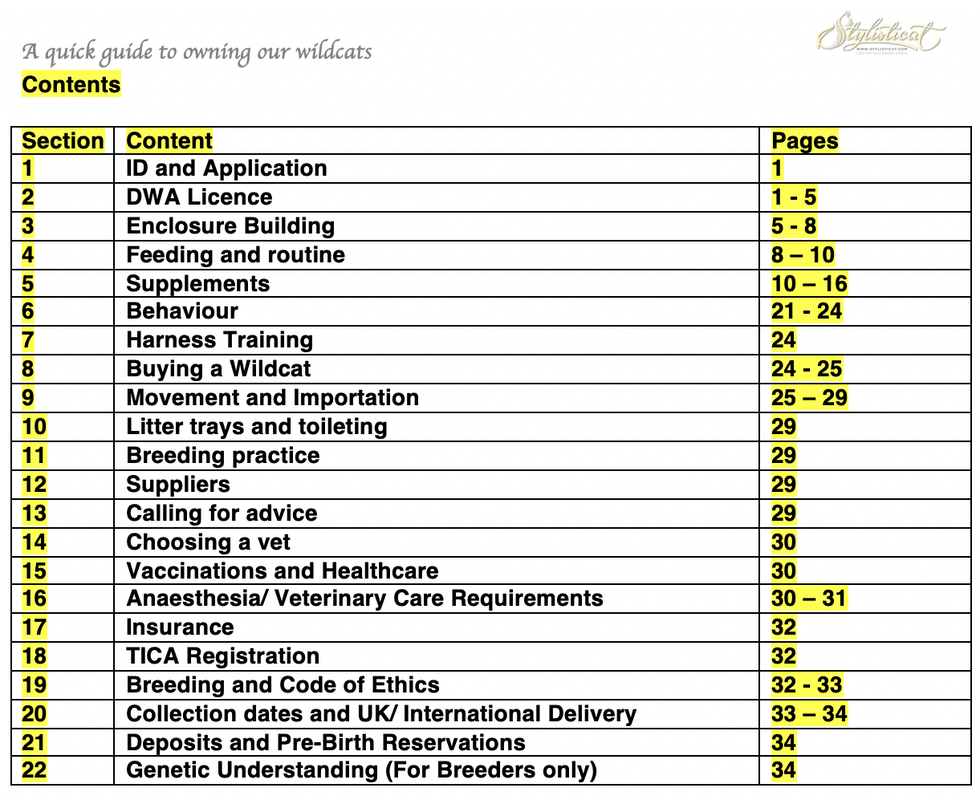
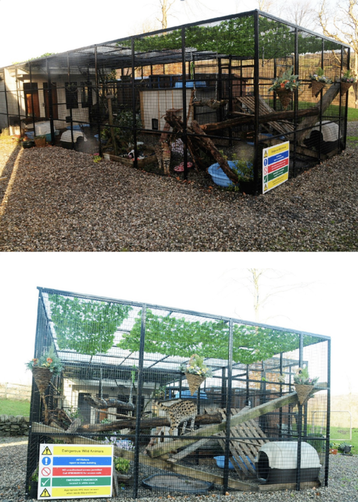
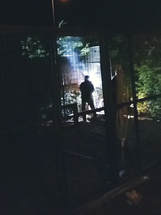
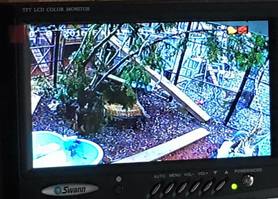
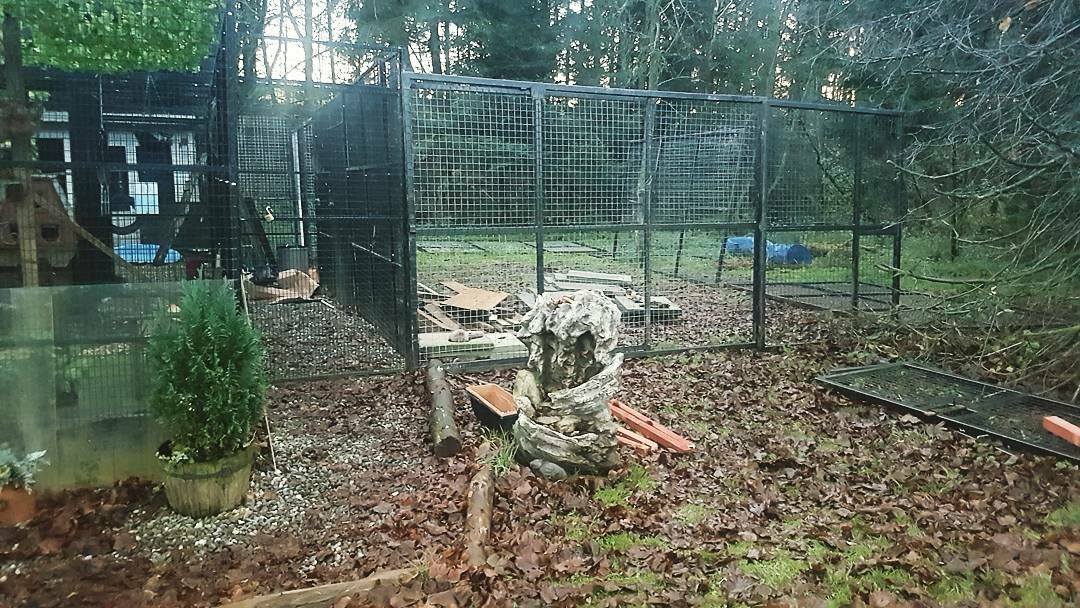
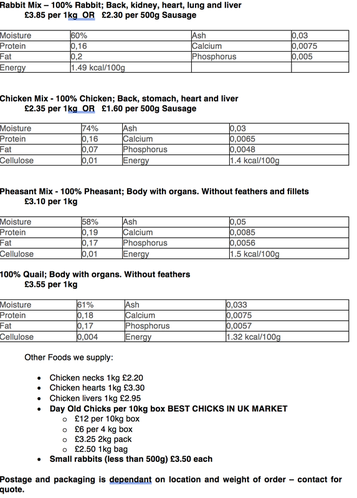
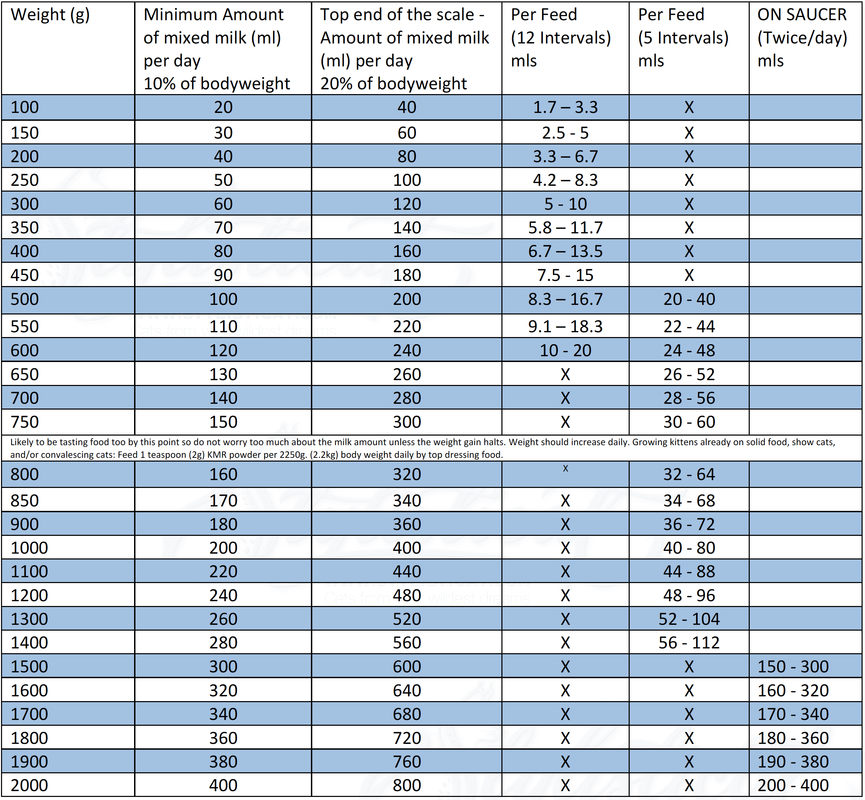
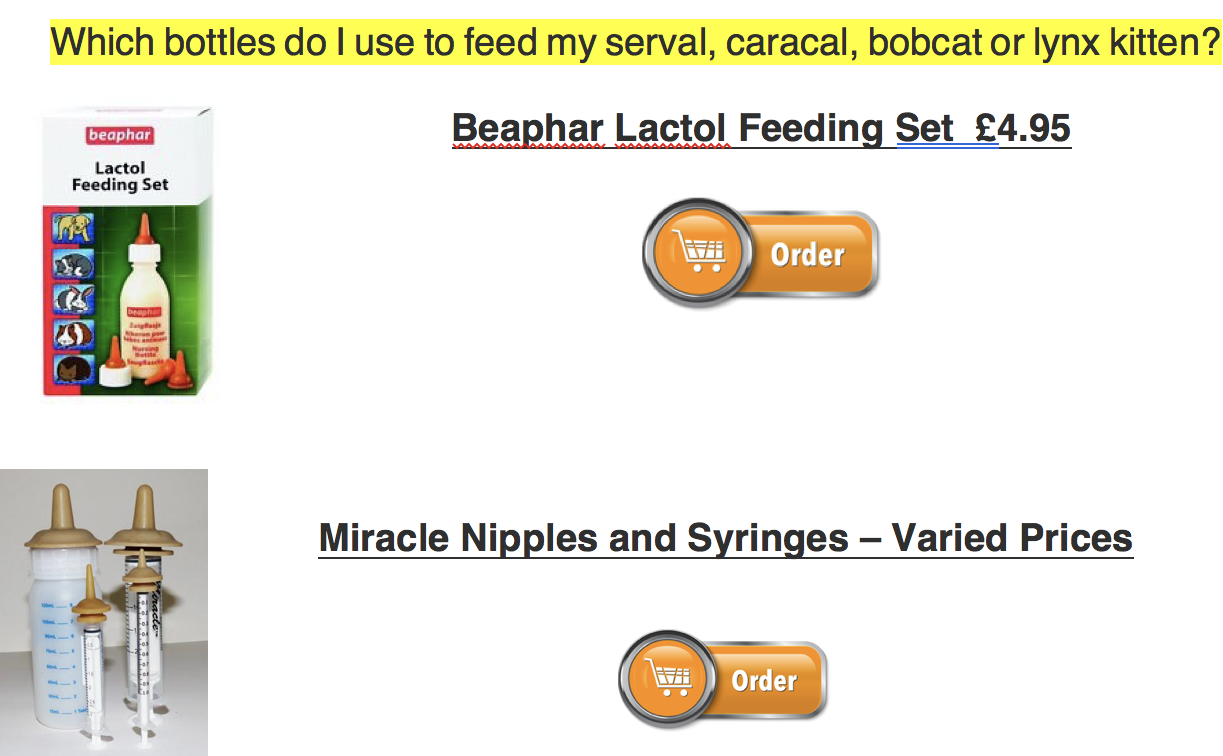
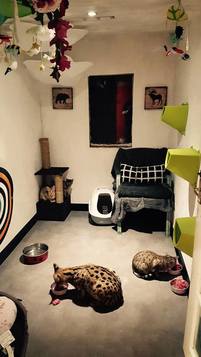
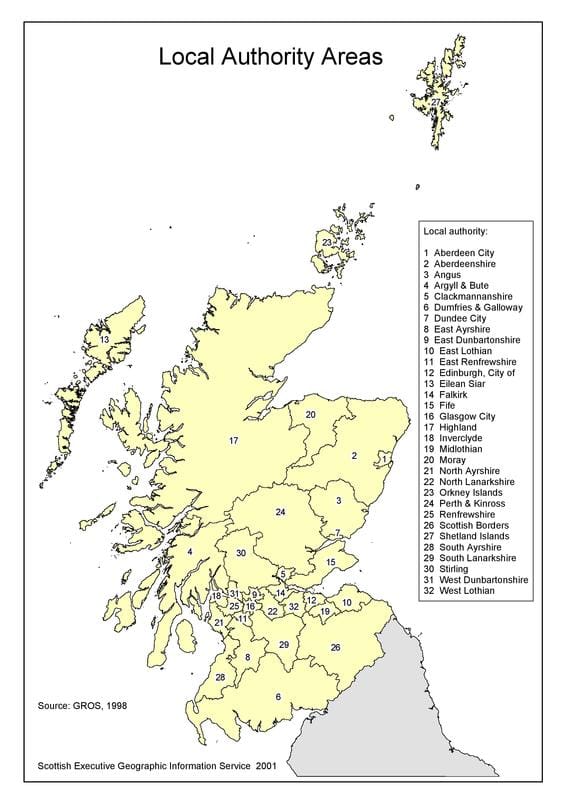


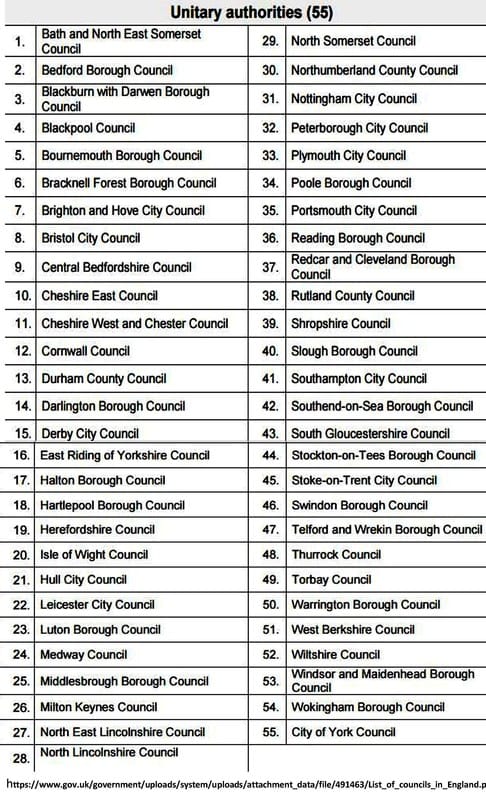
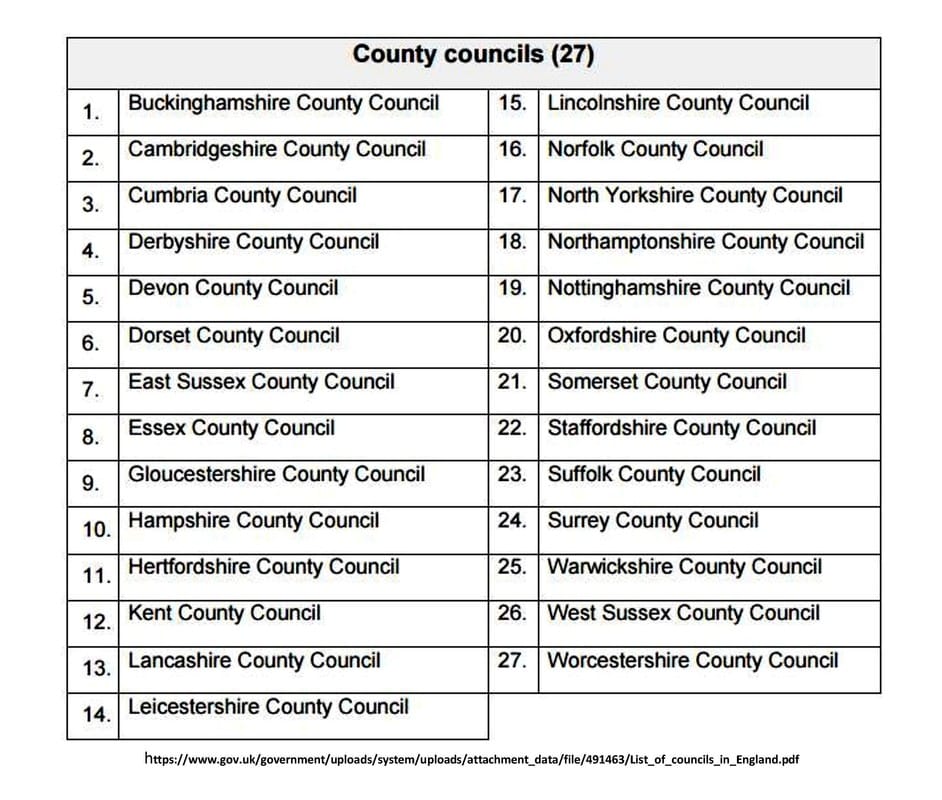
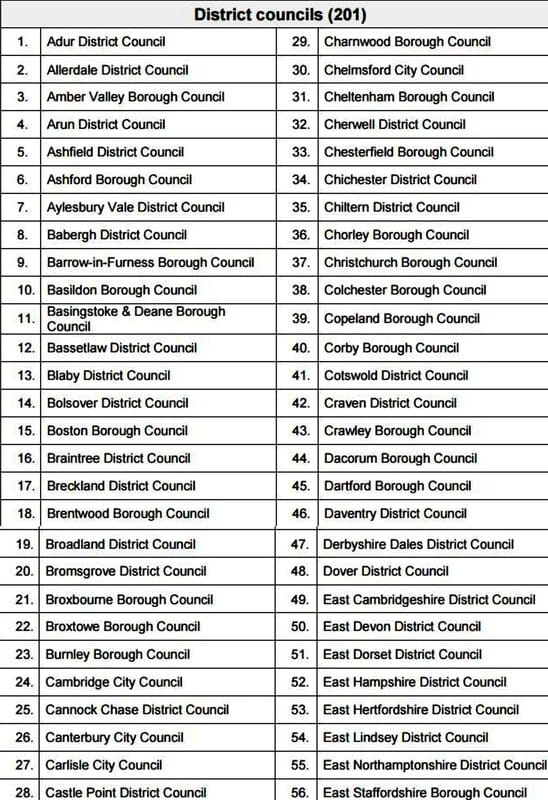
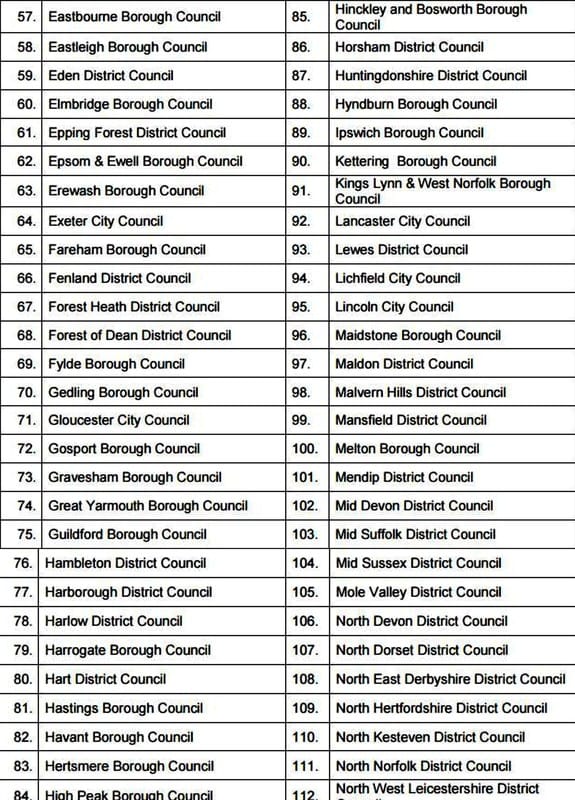
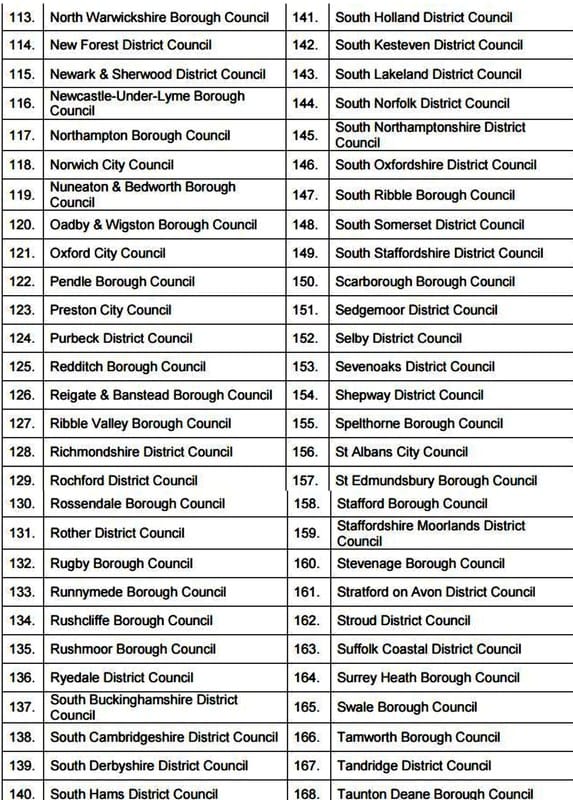

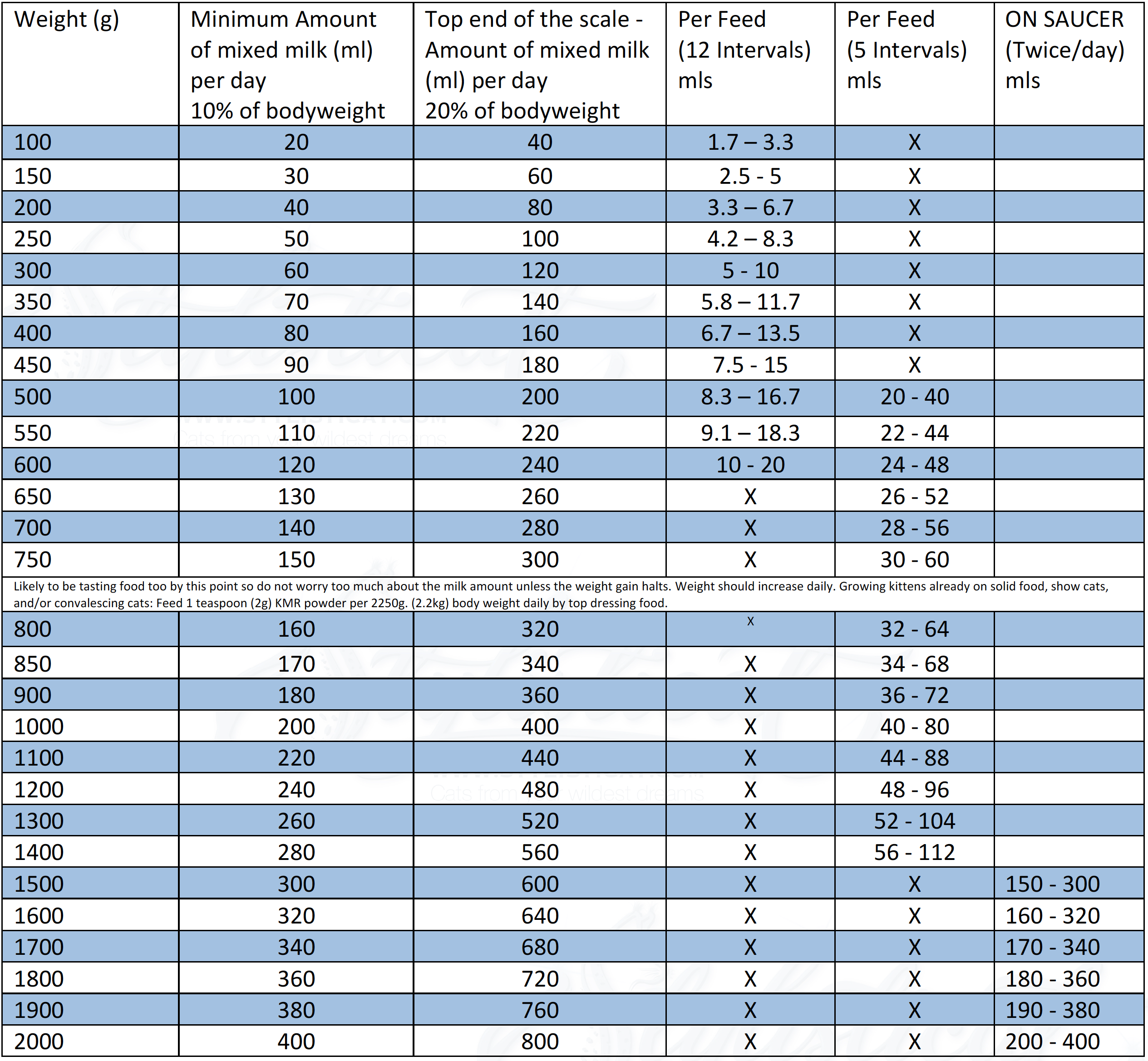
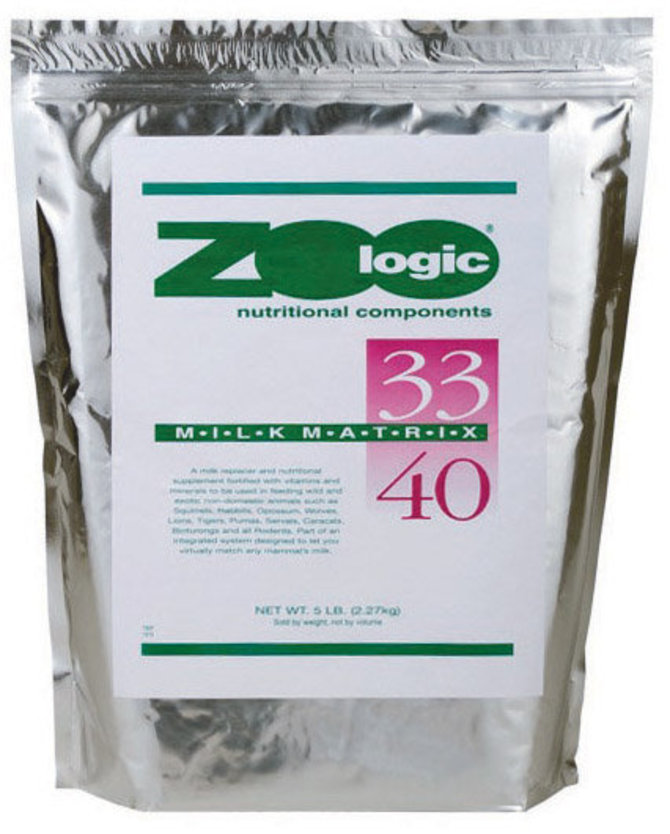

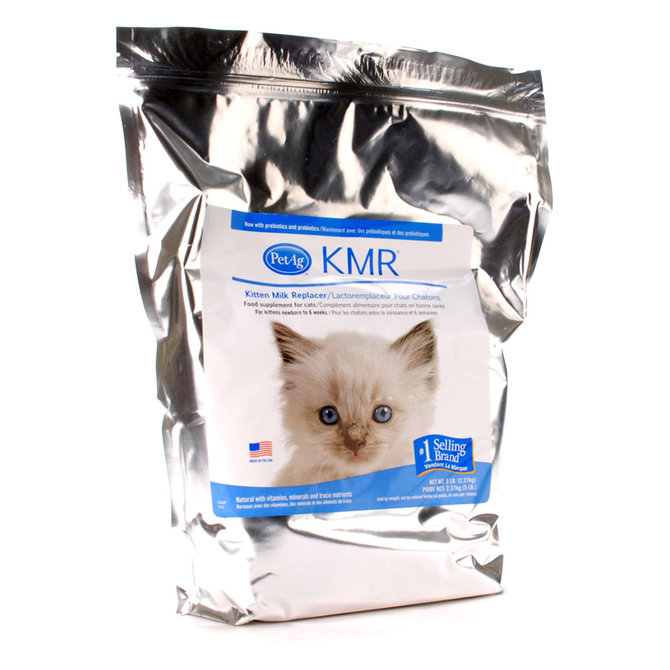

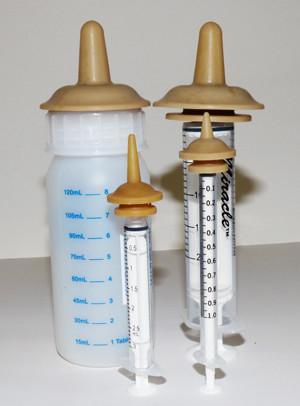

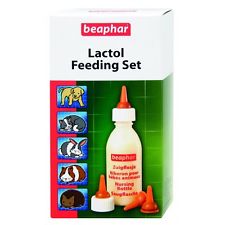

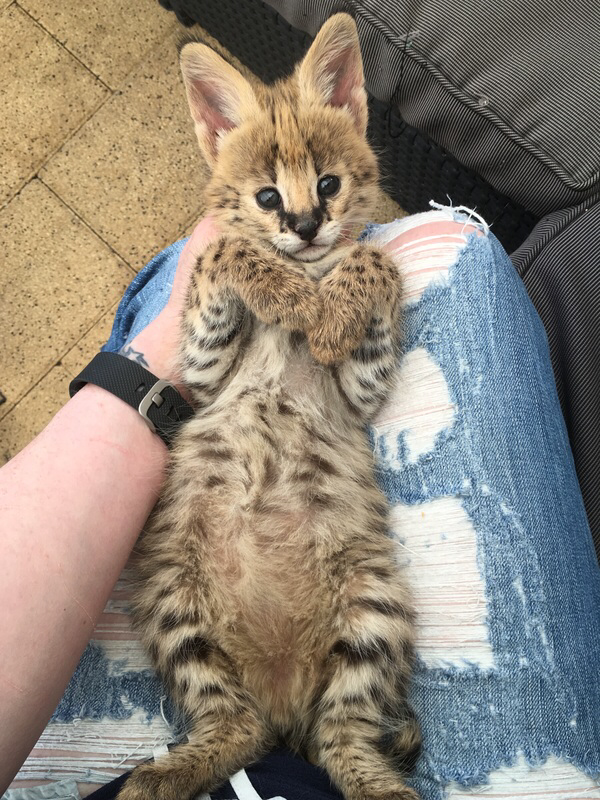
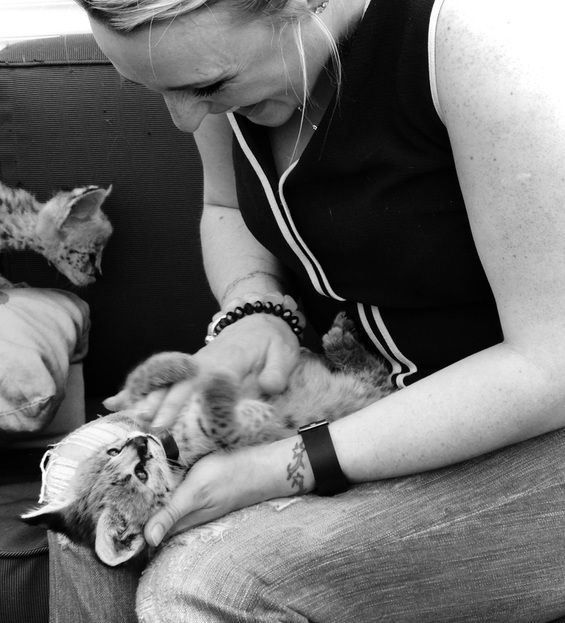
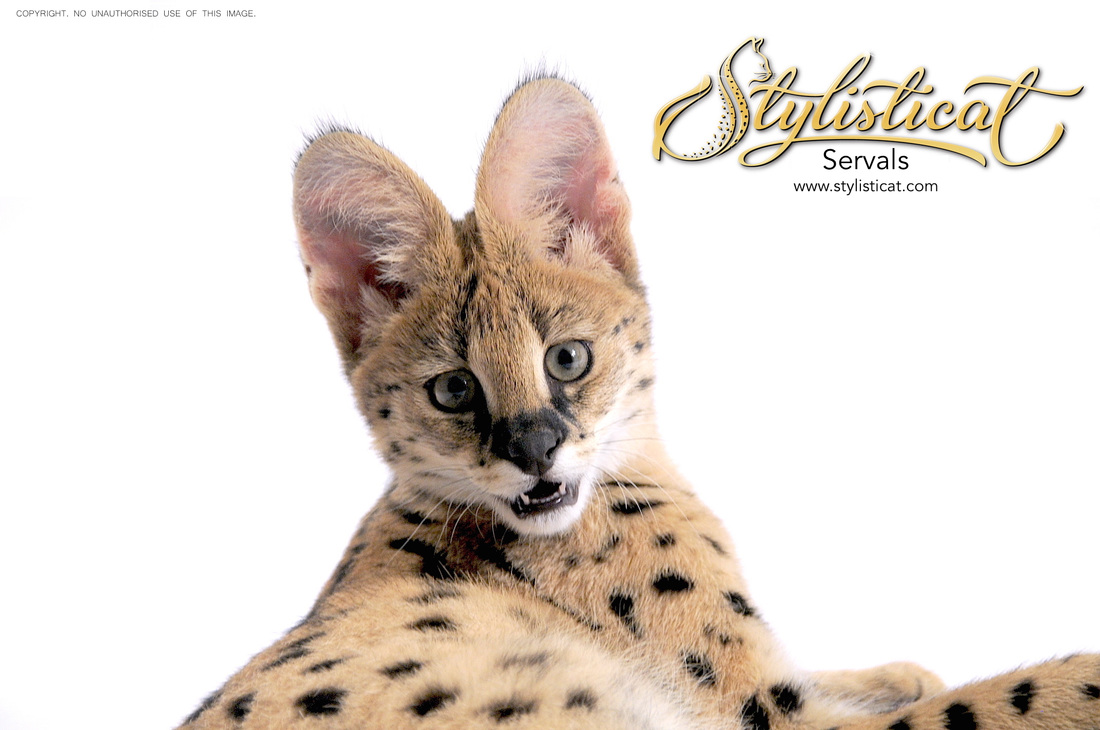
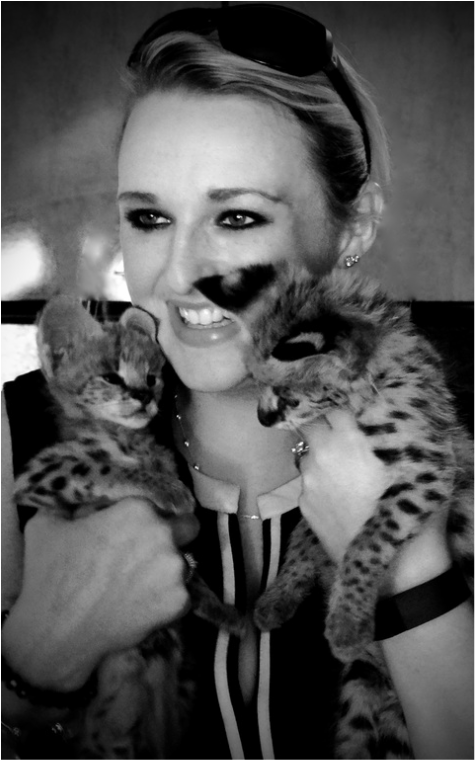
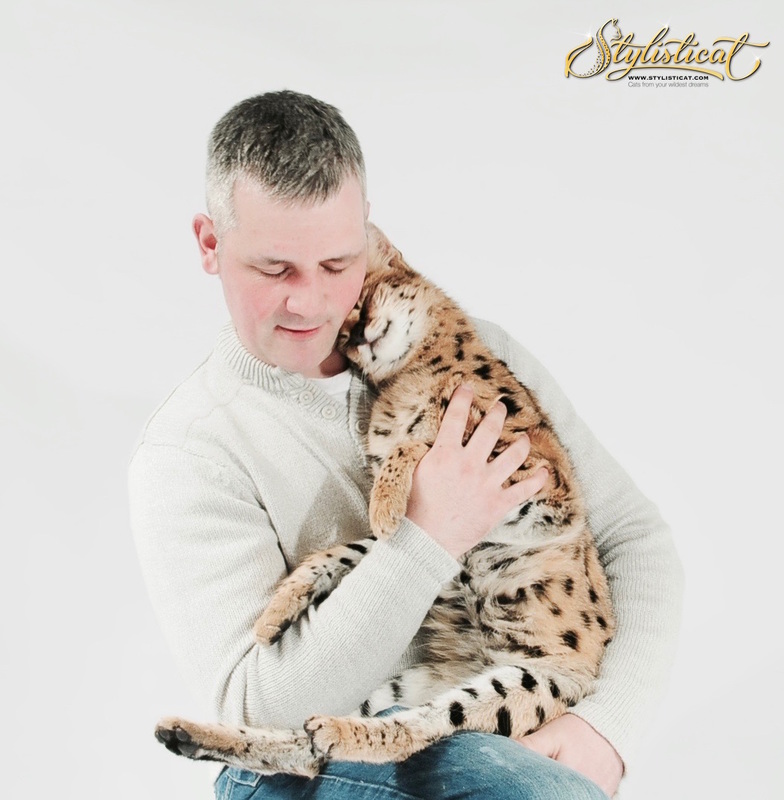
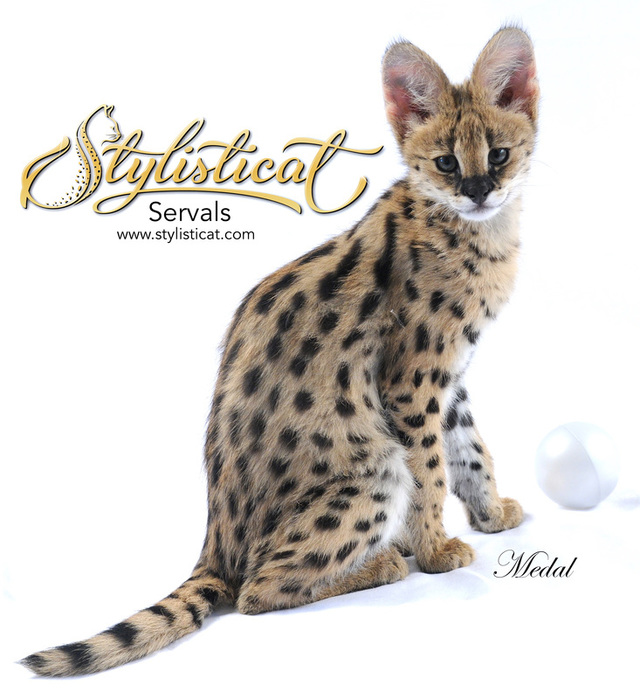
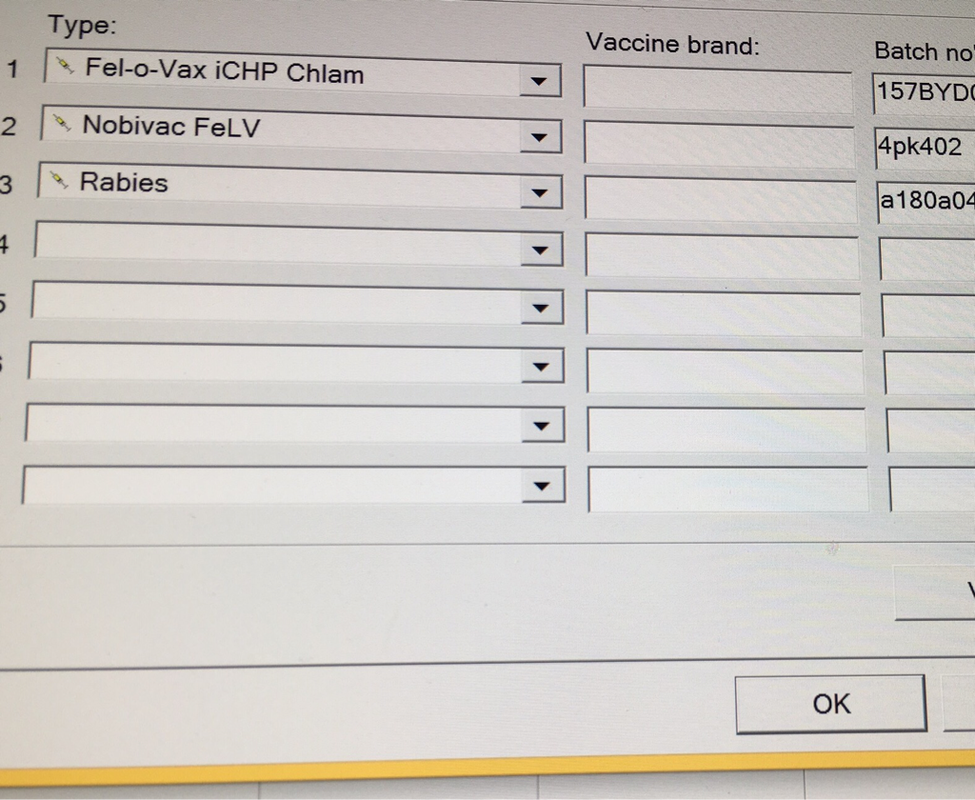
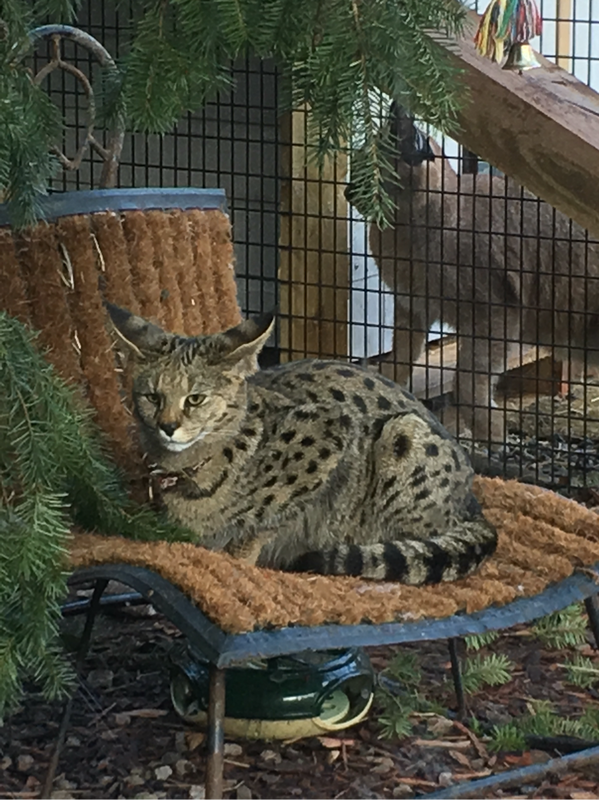






 RSS Feed
RSS Feed
